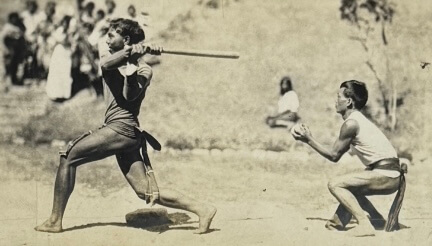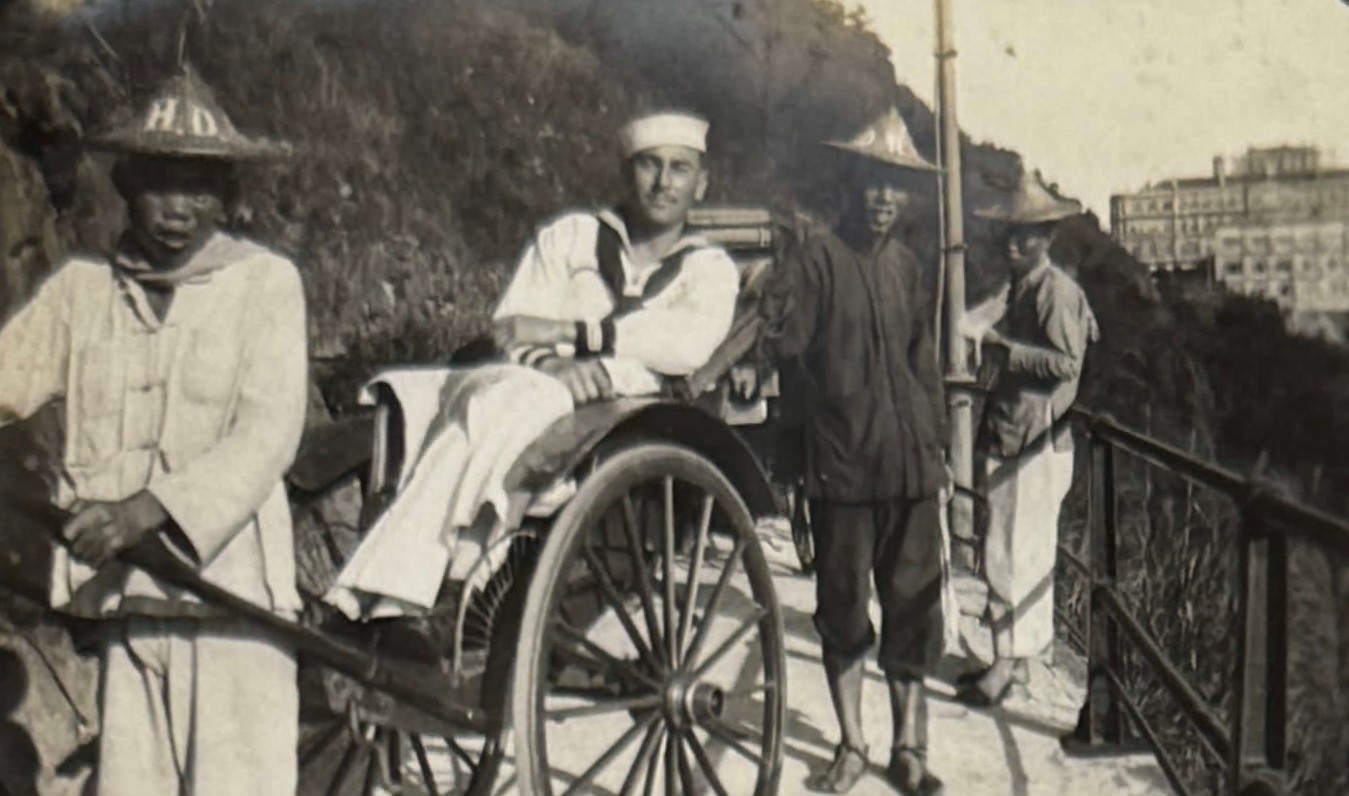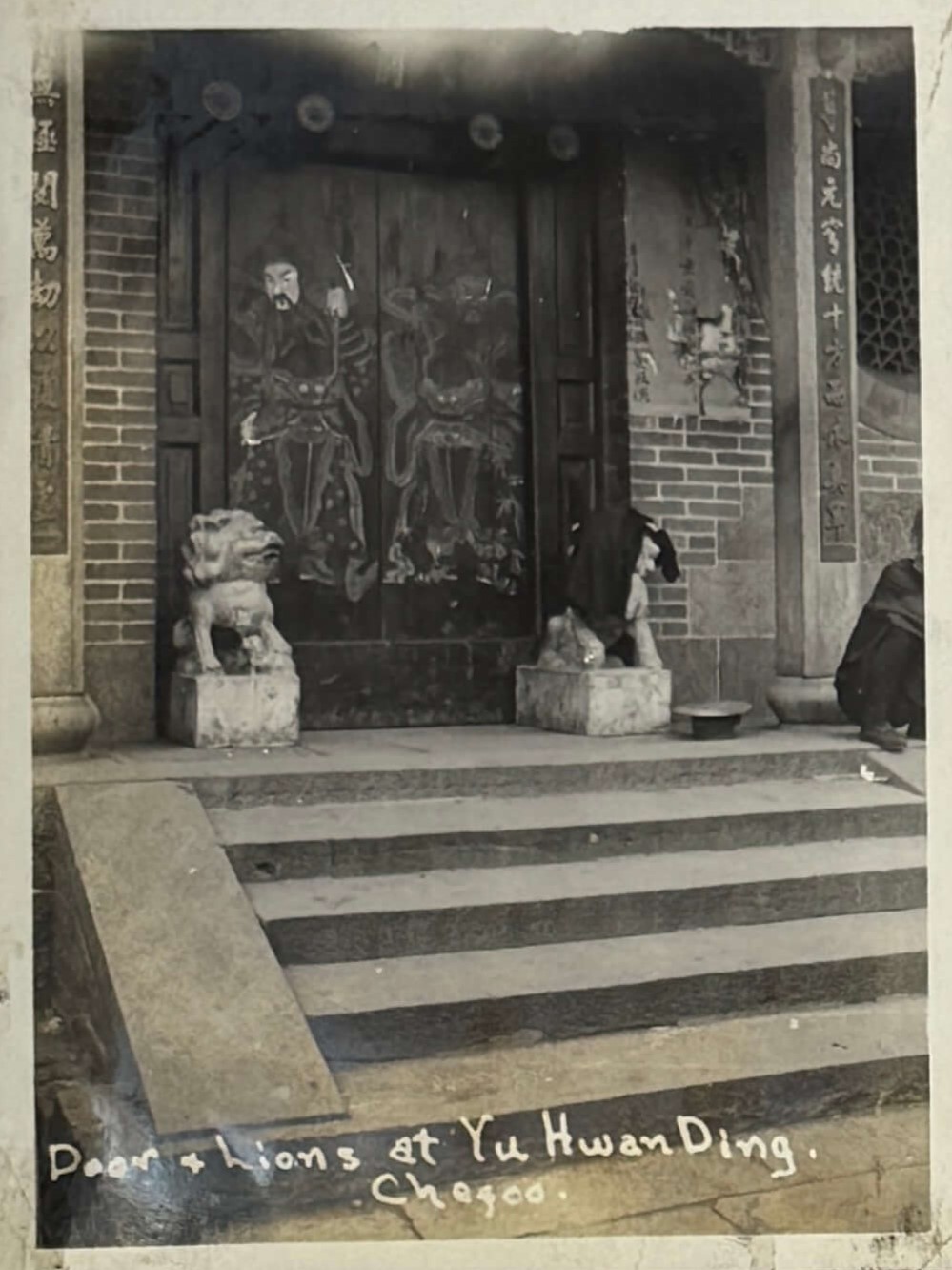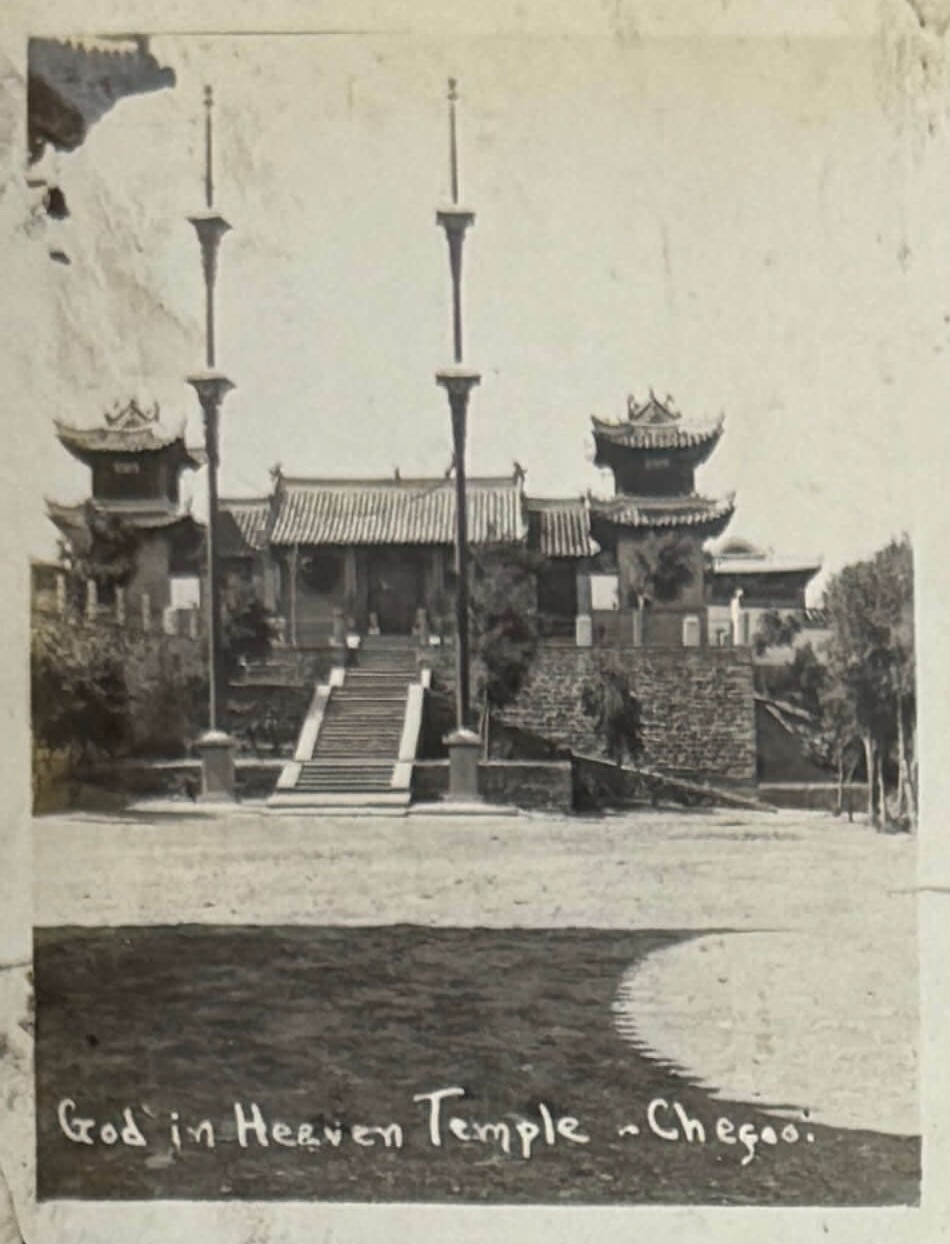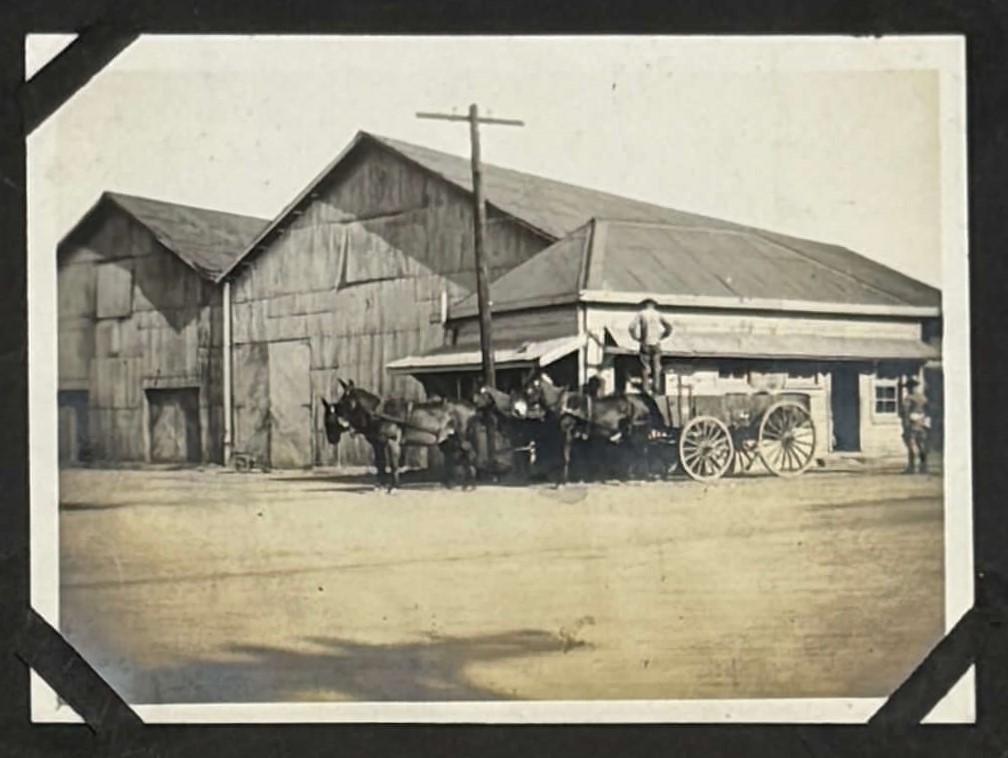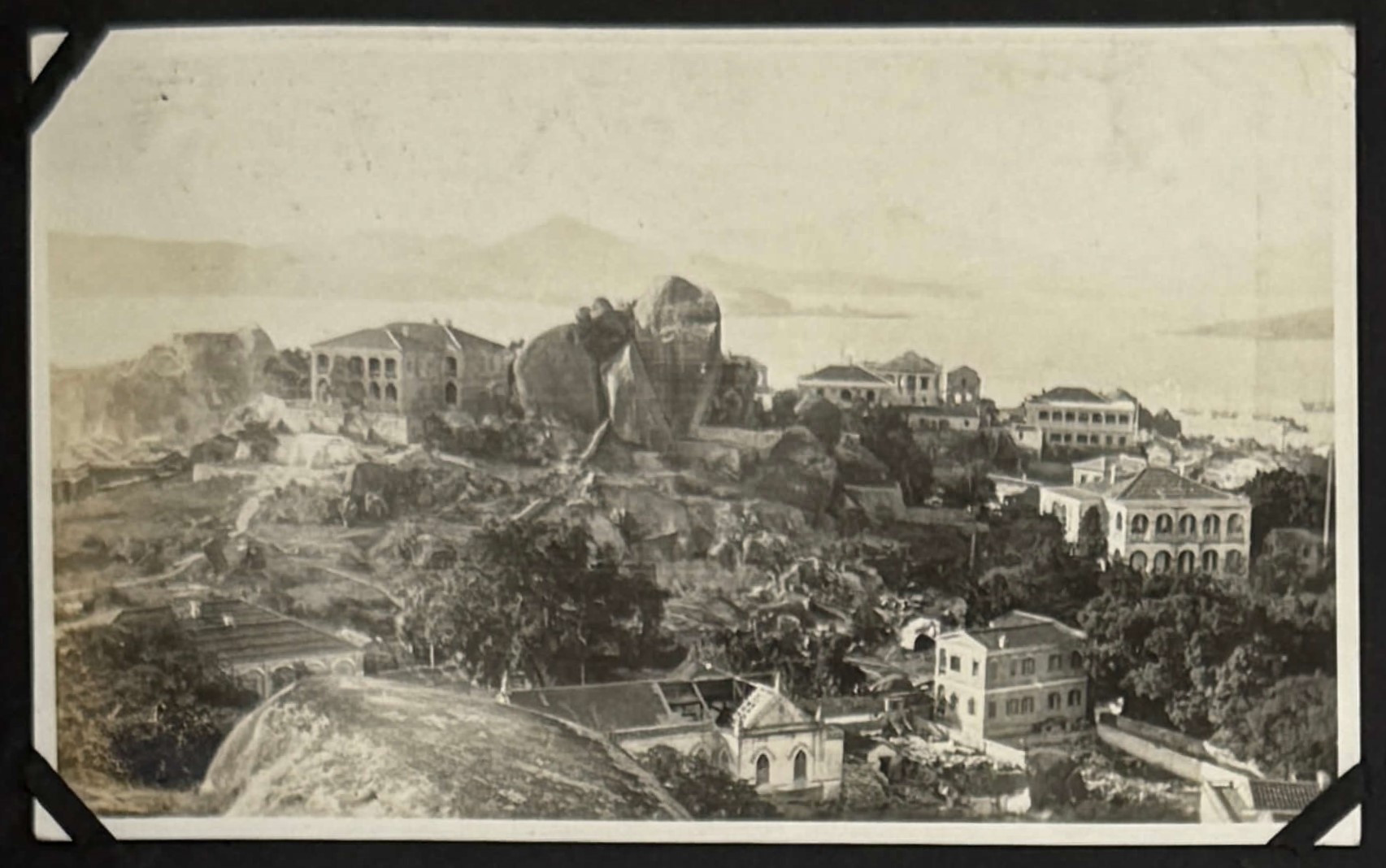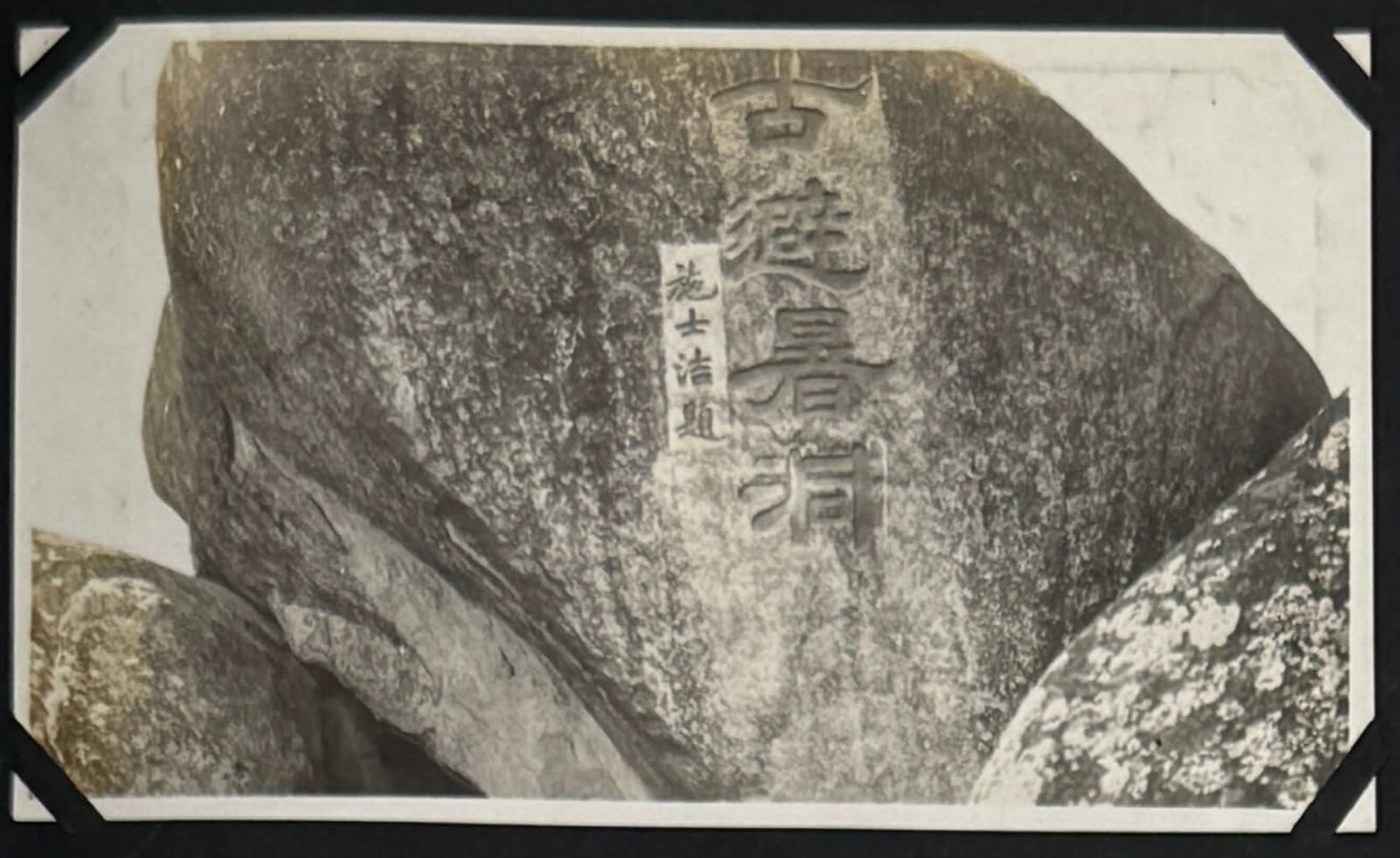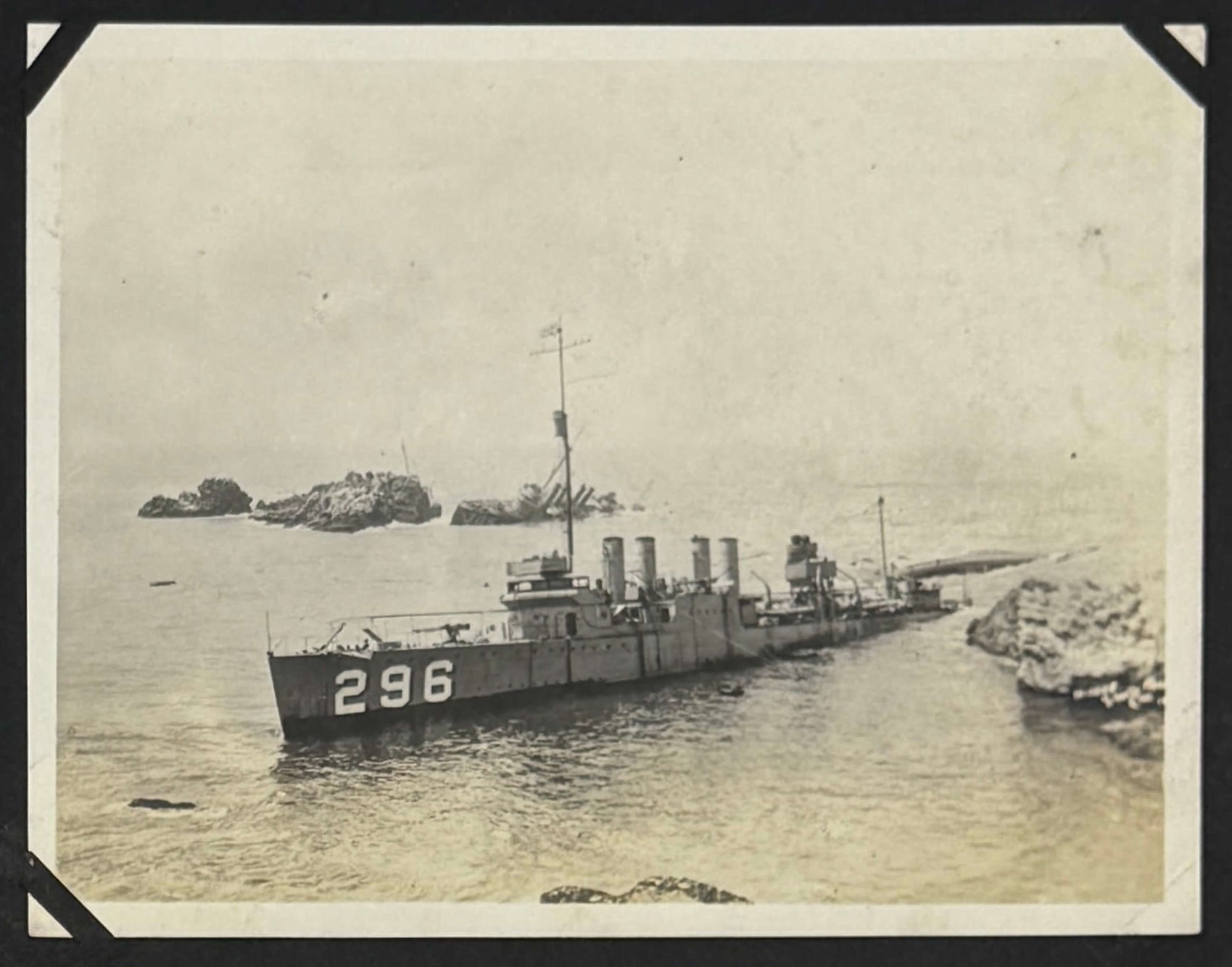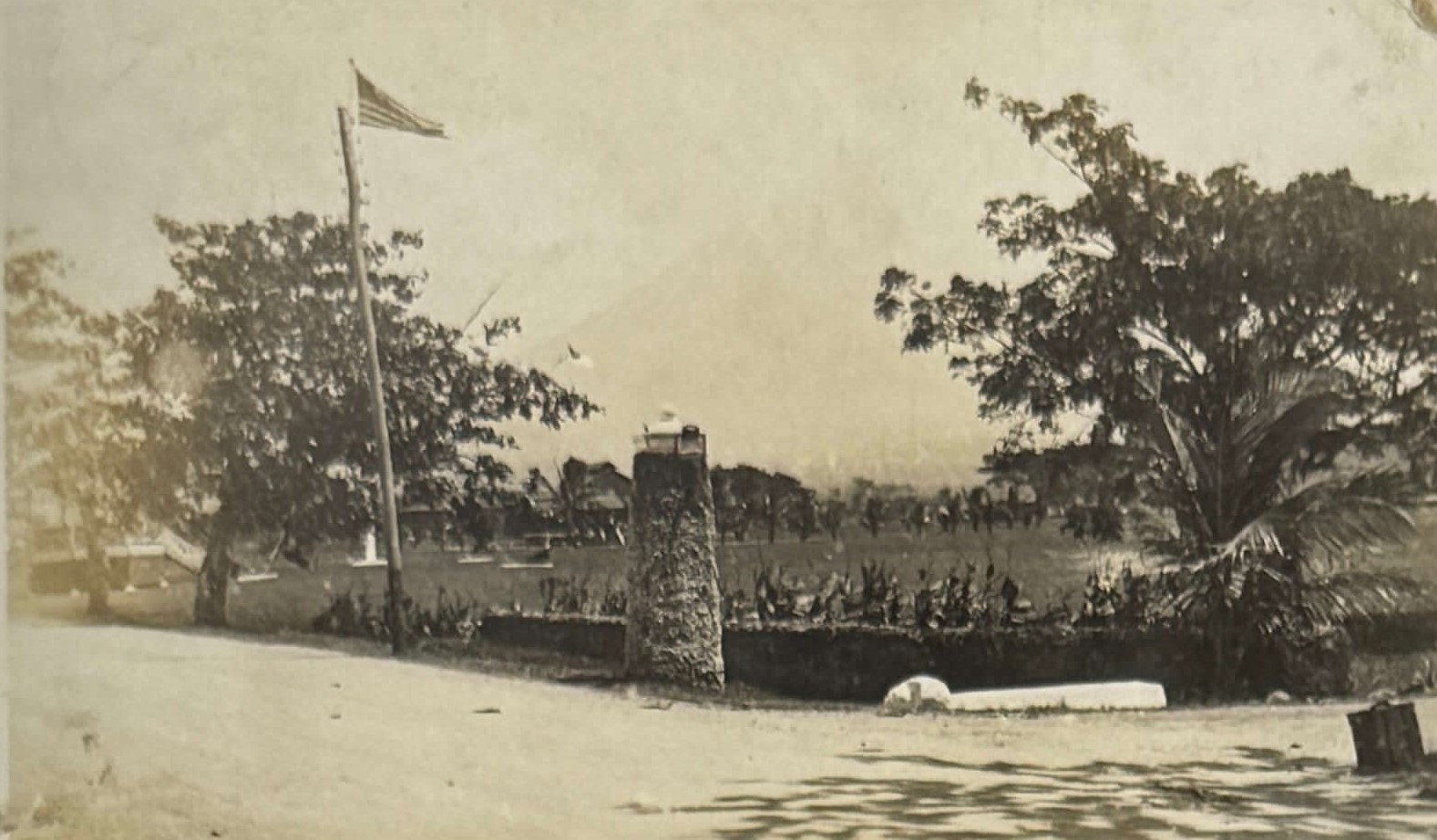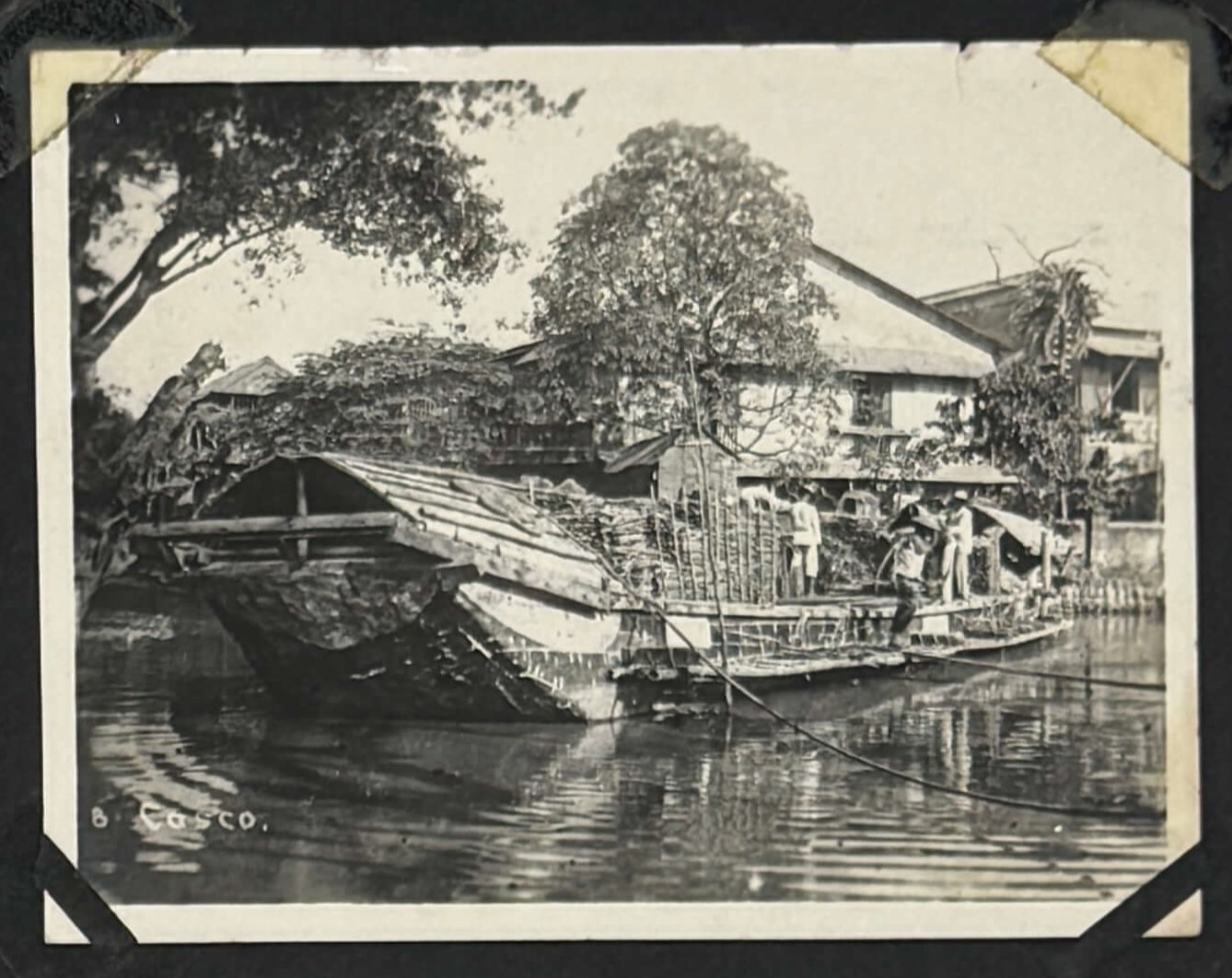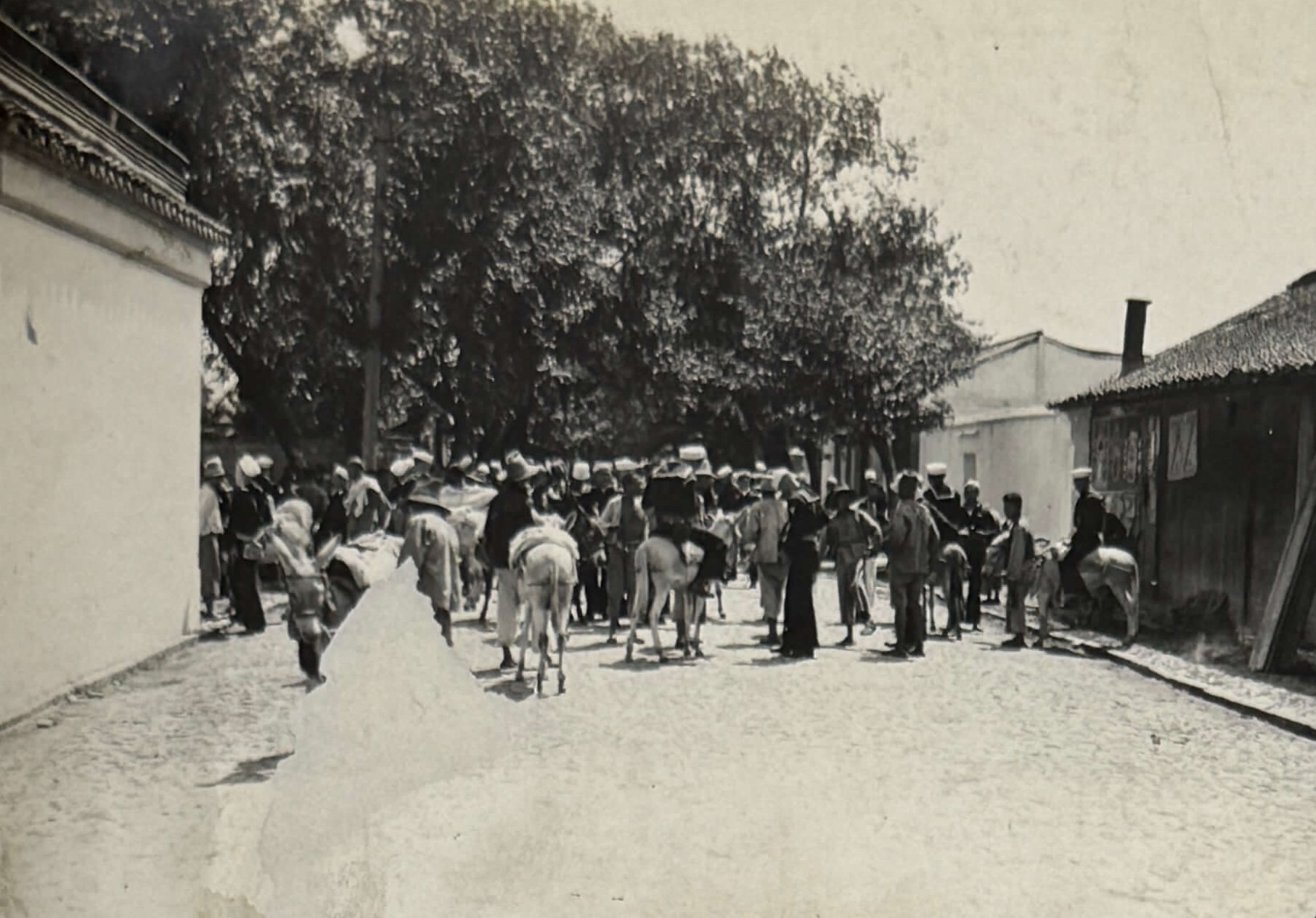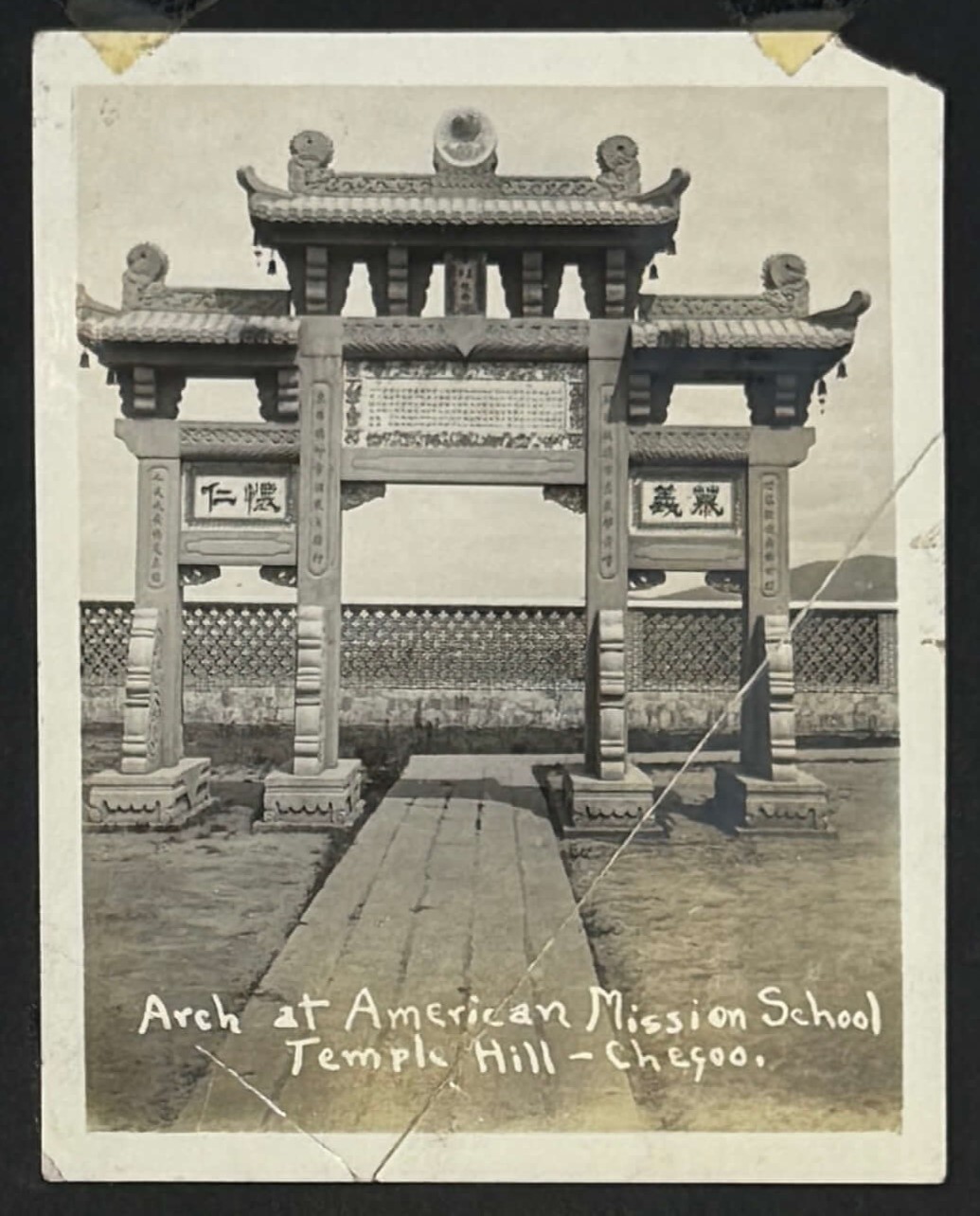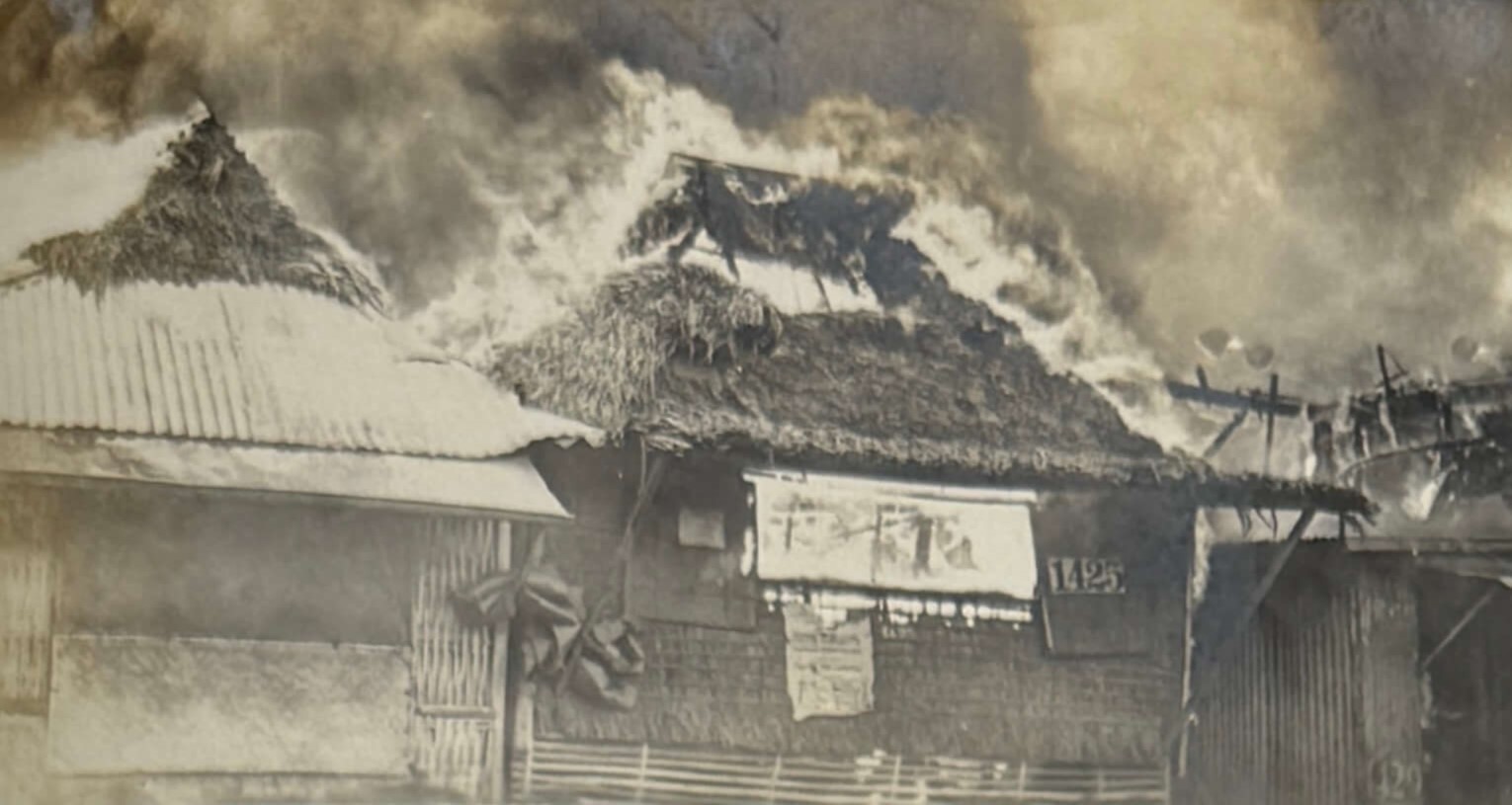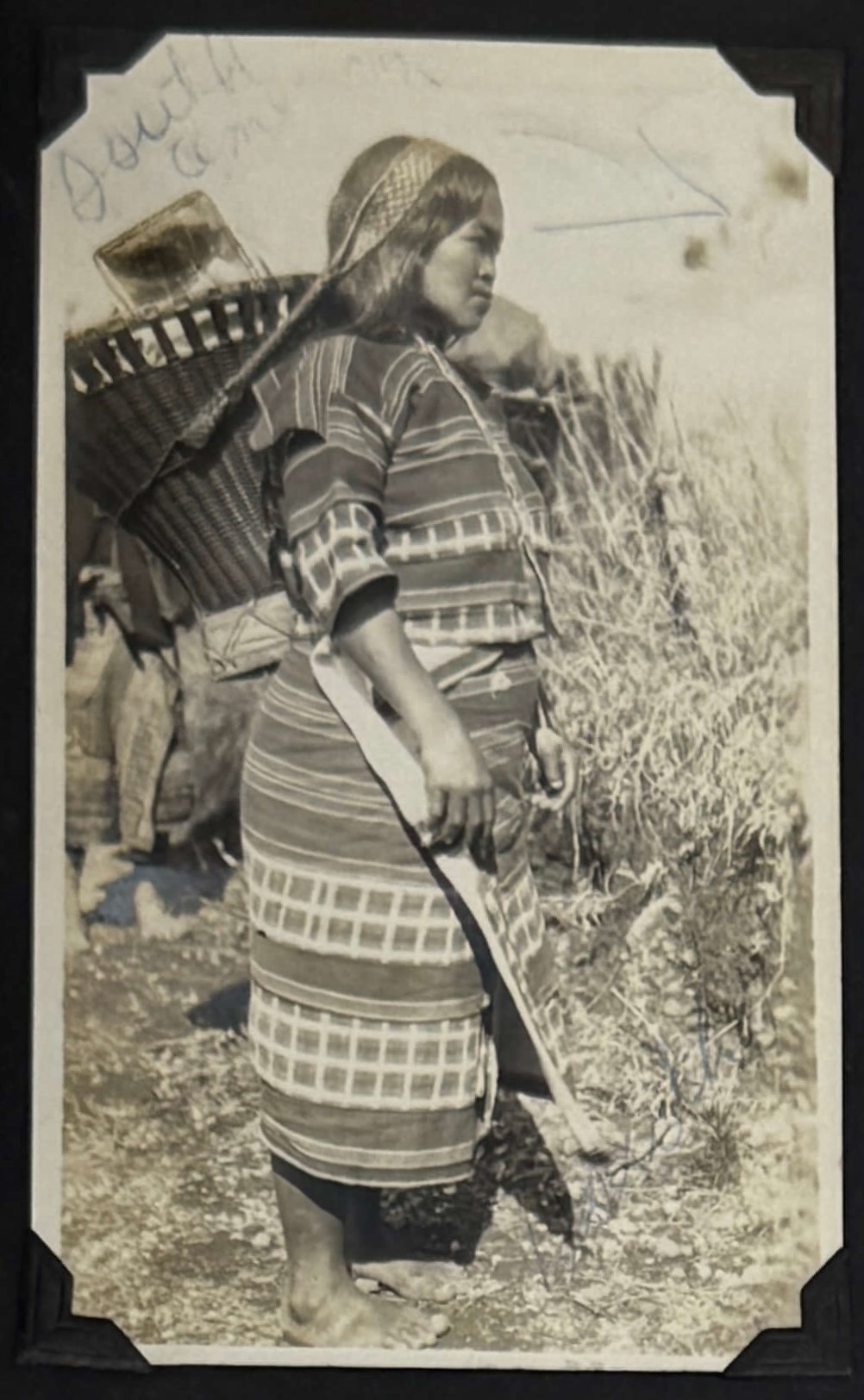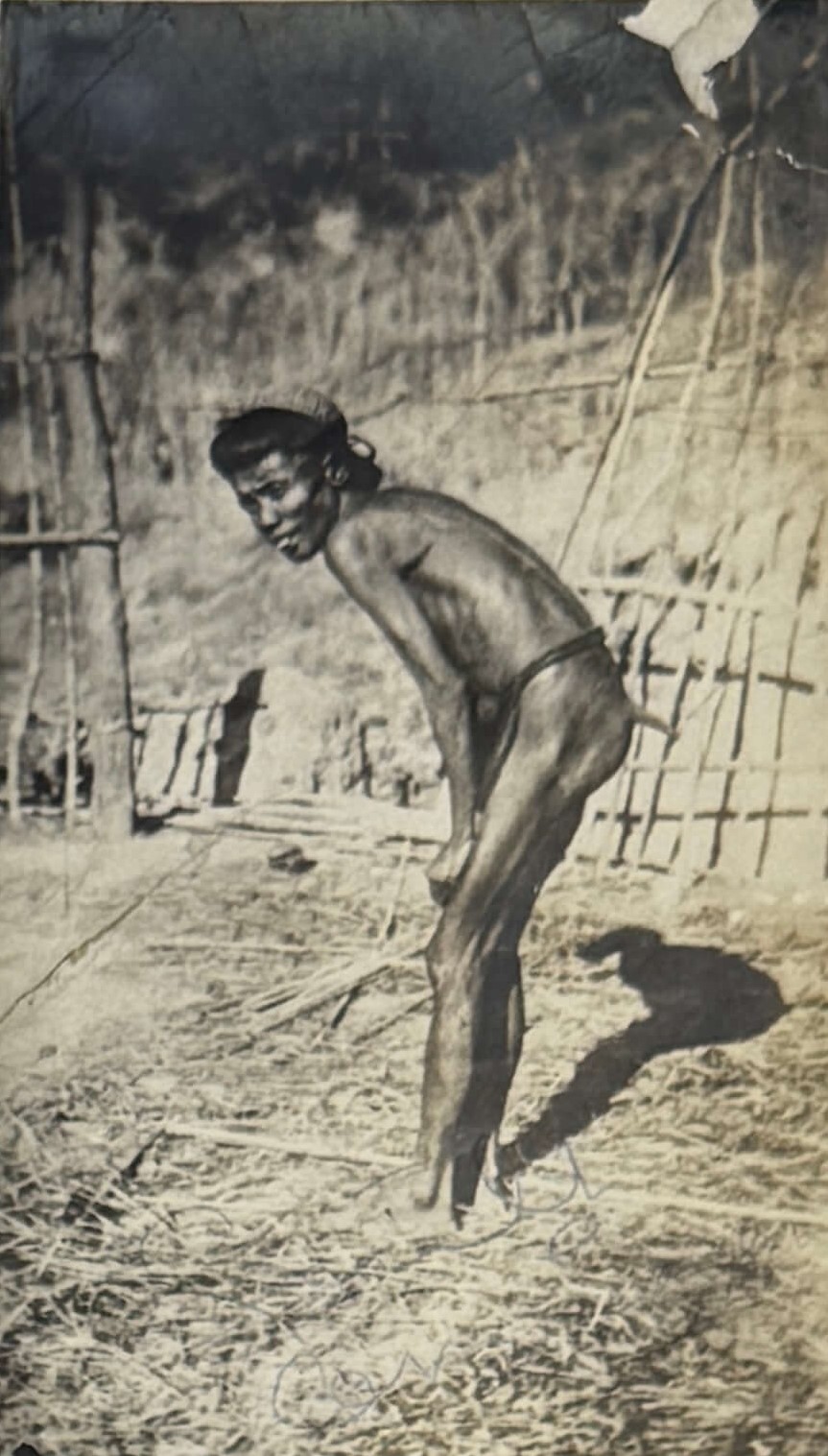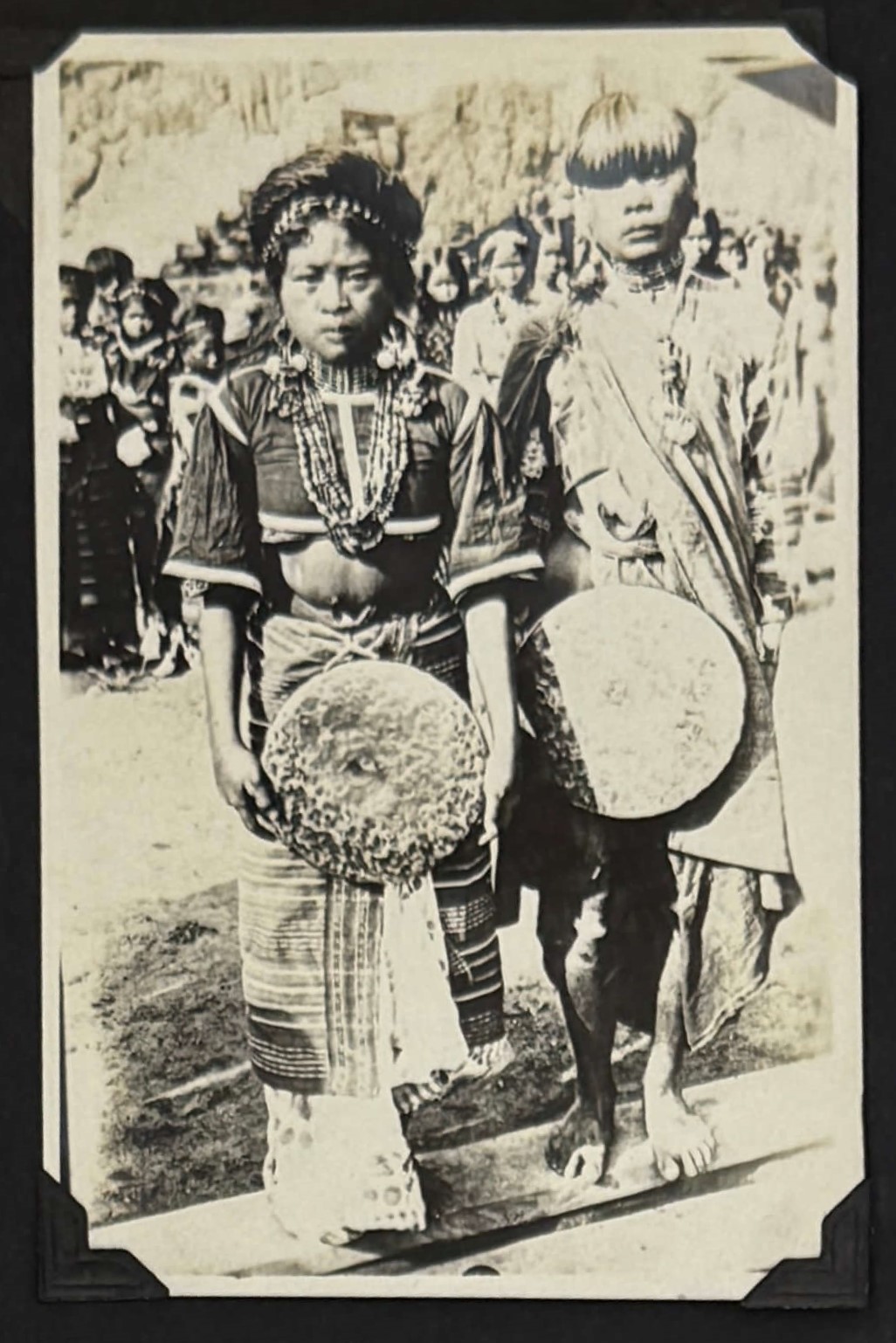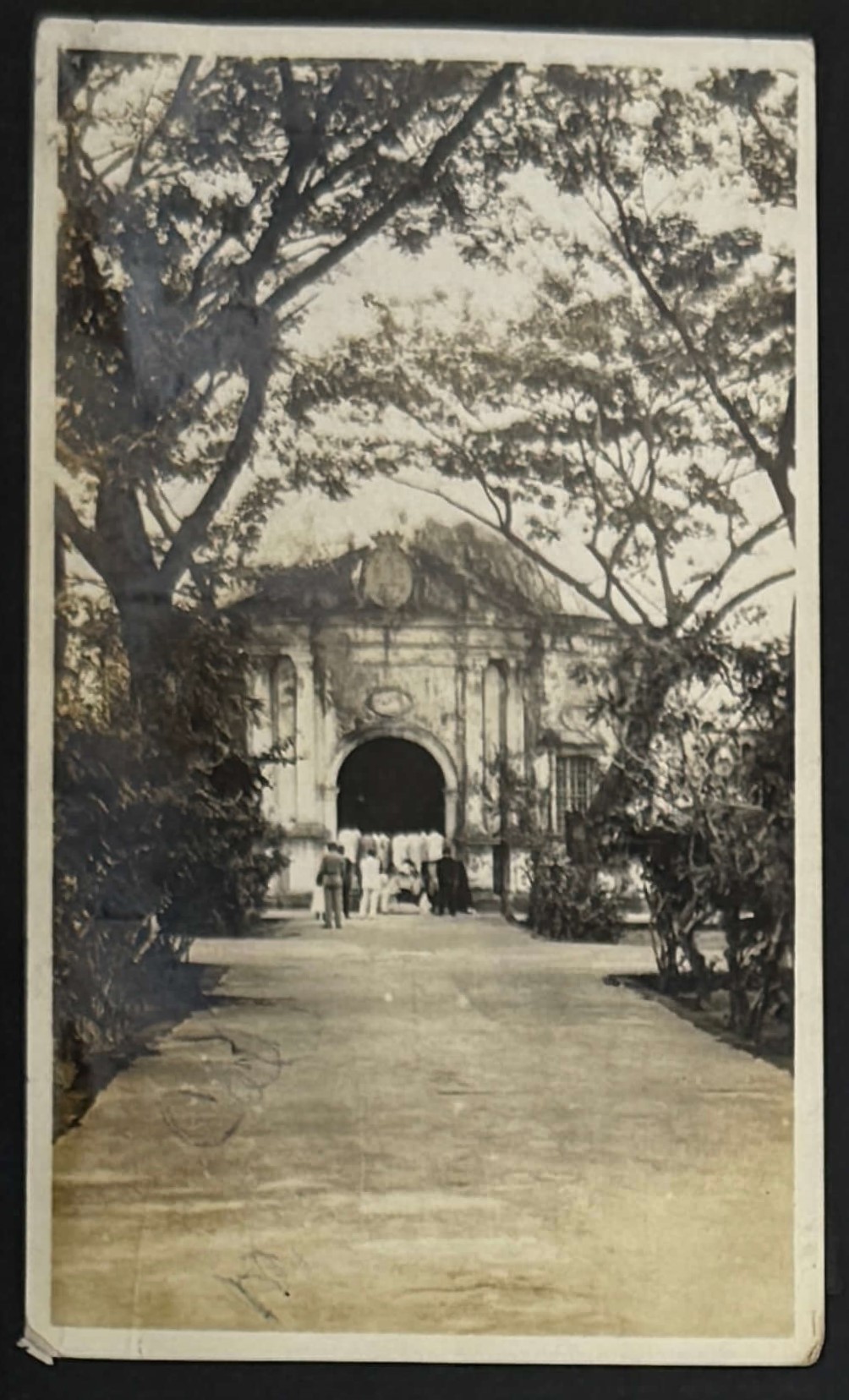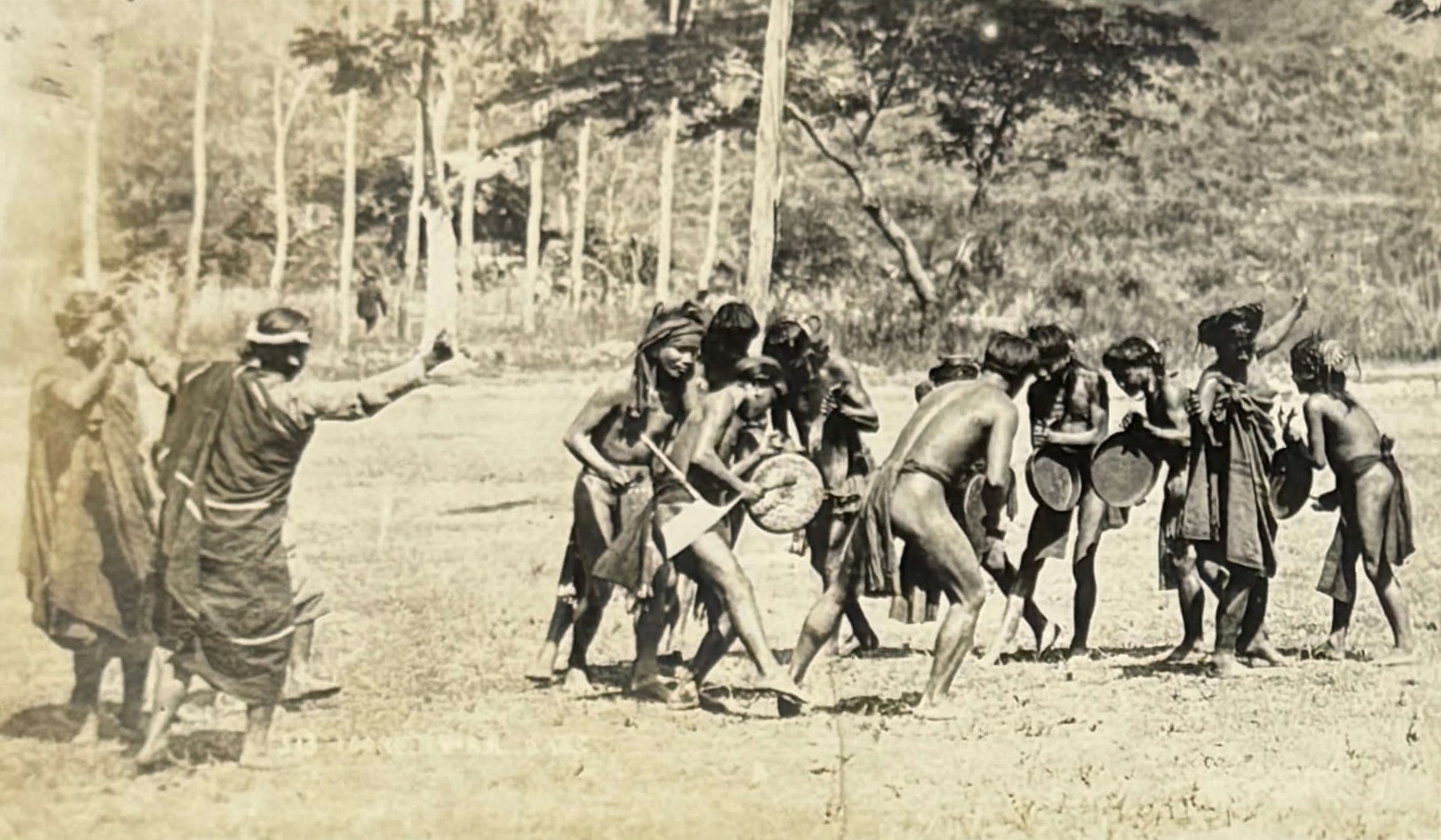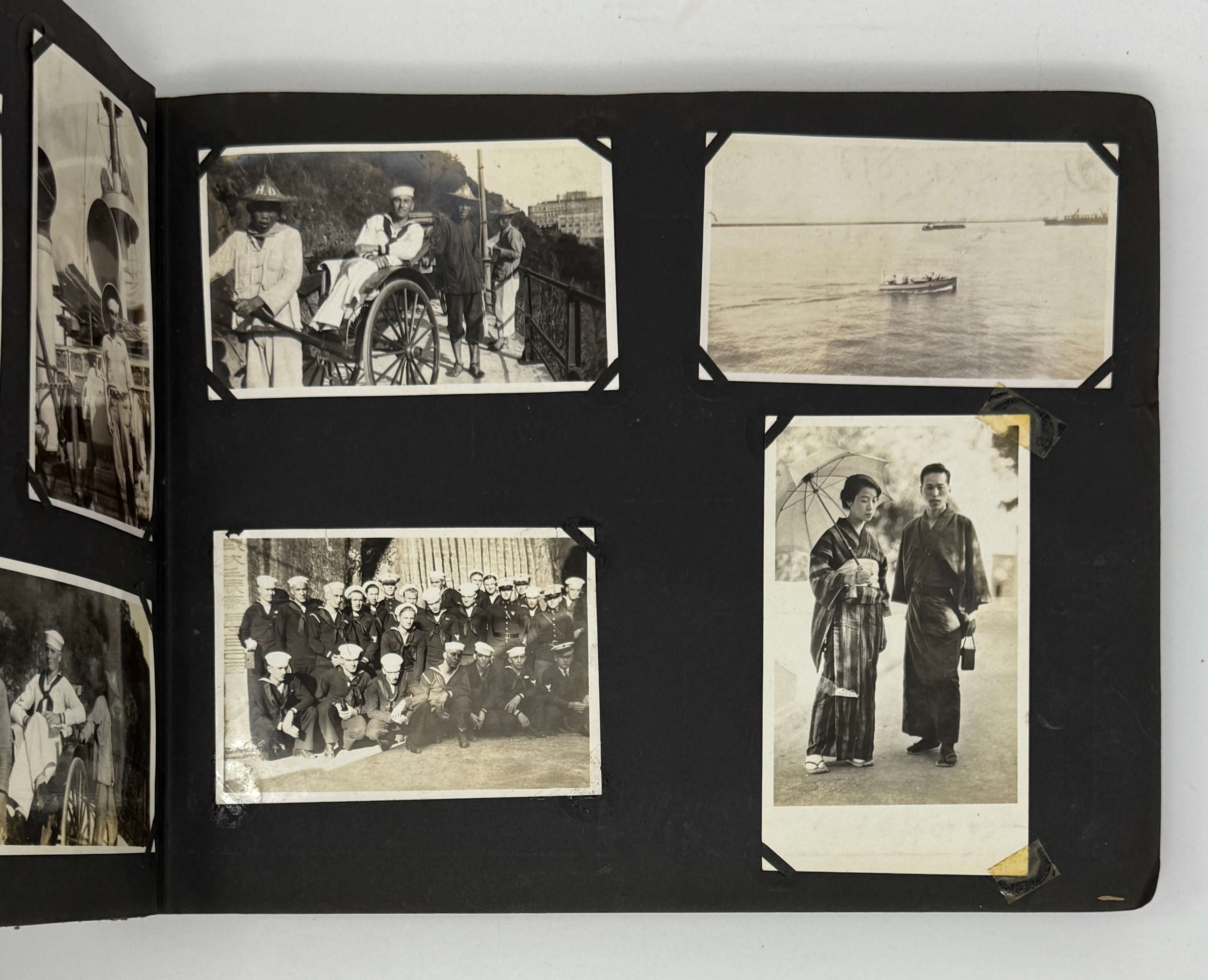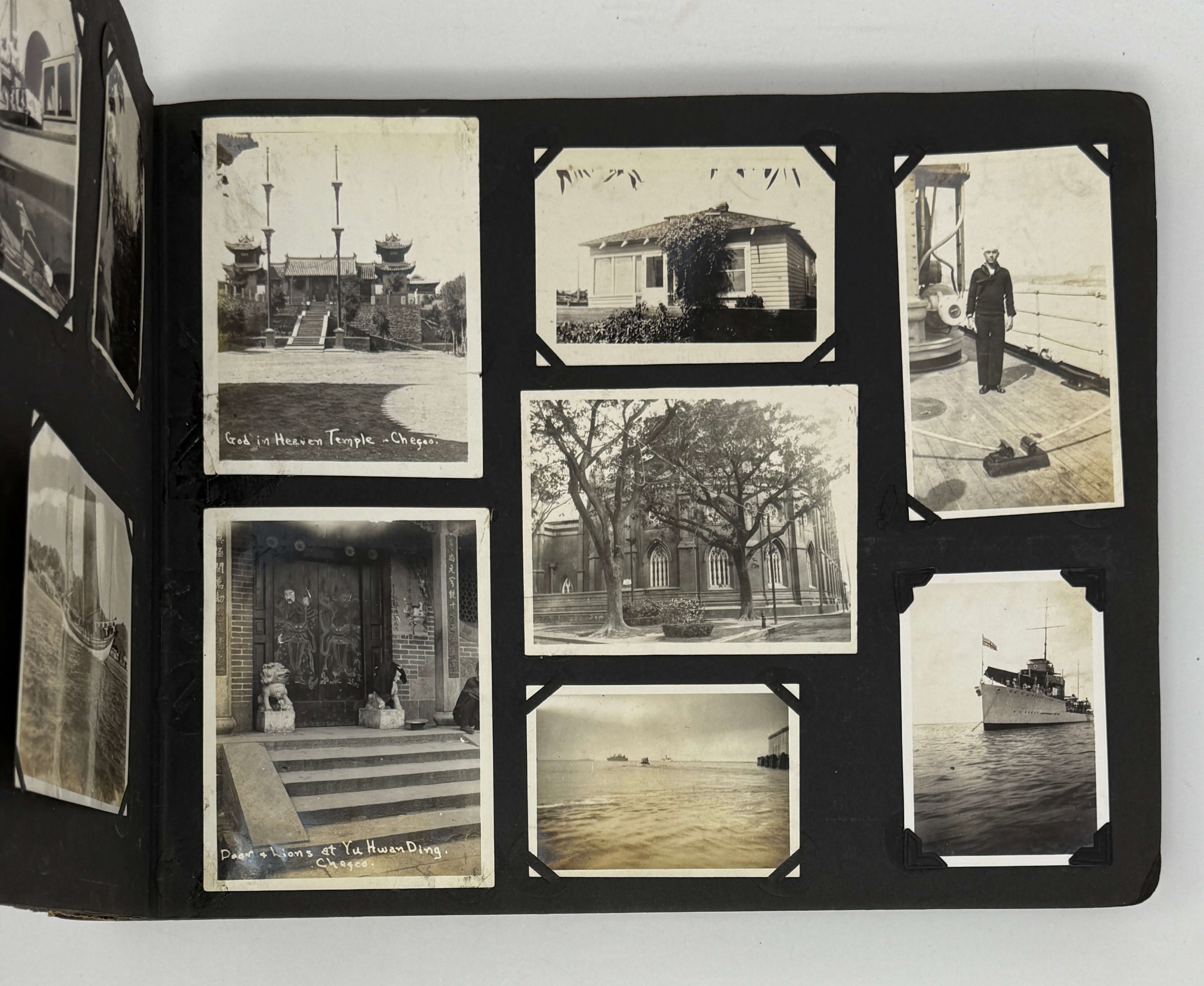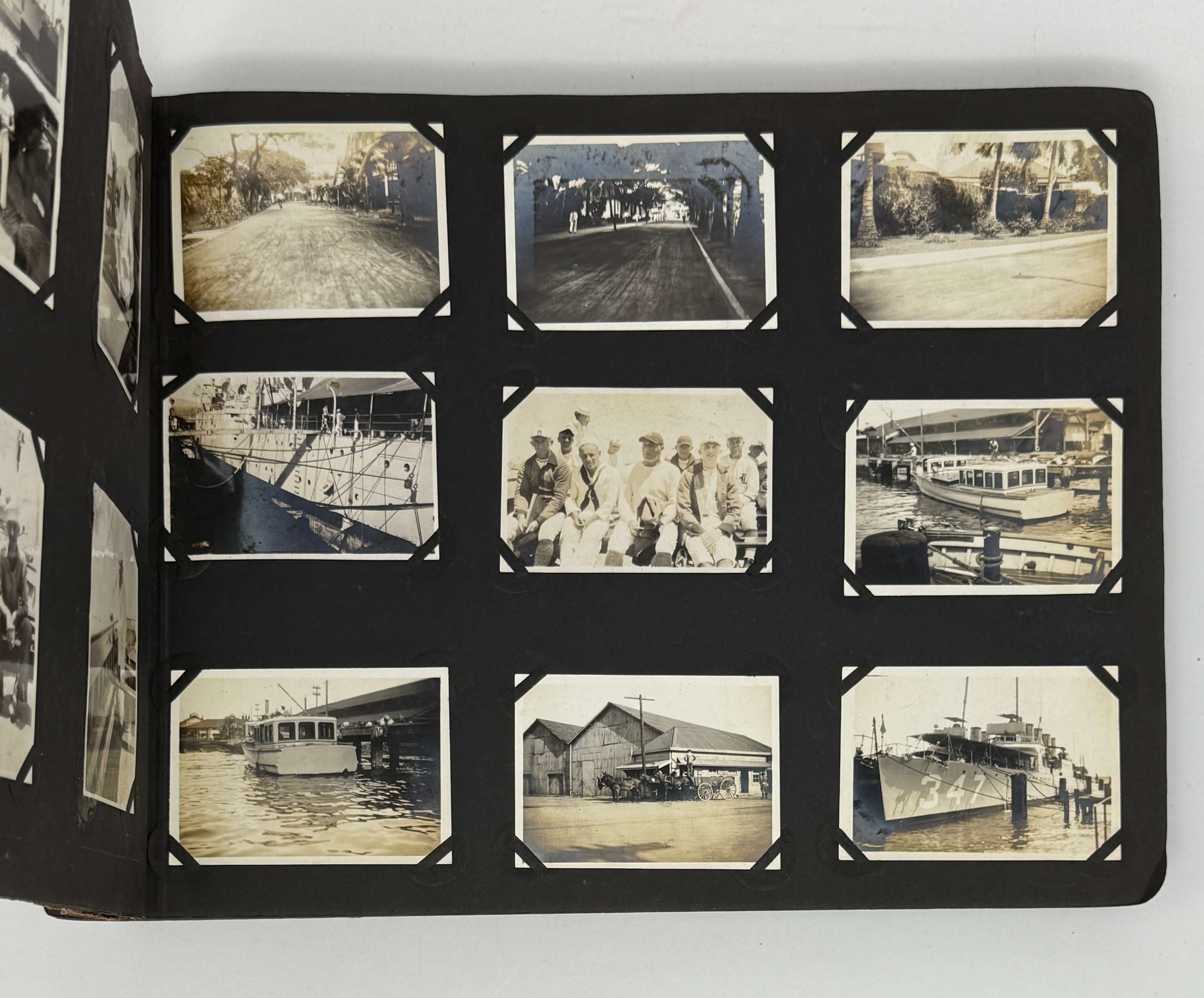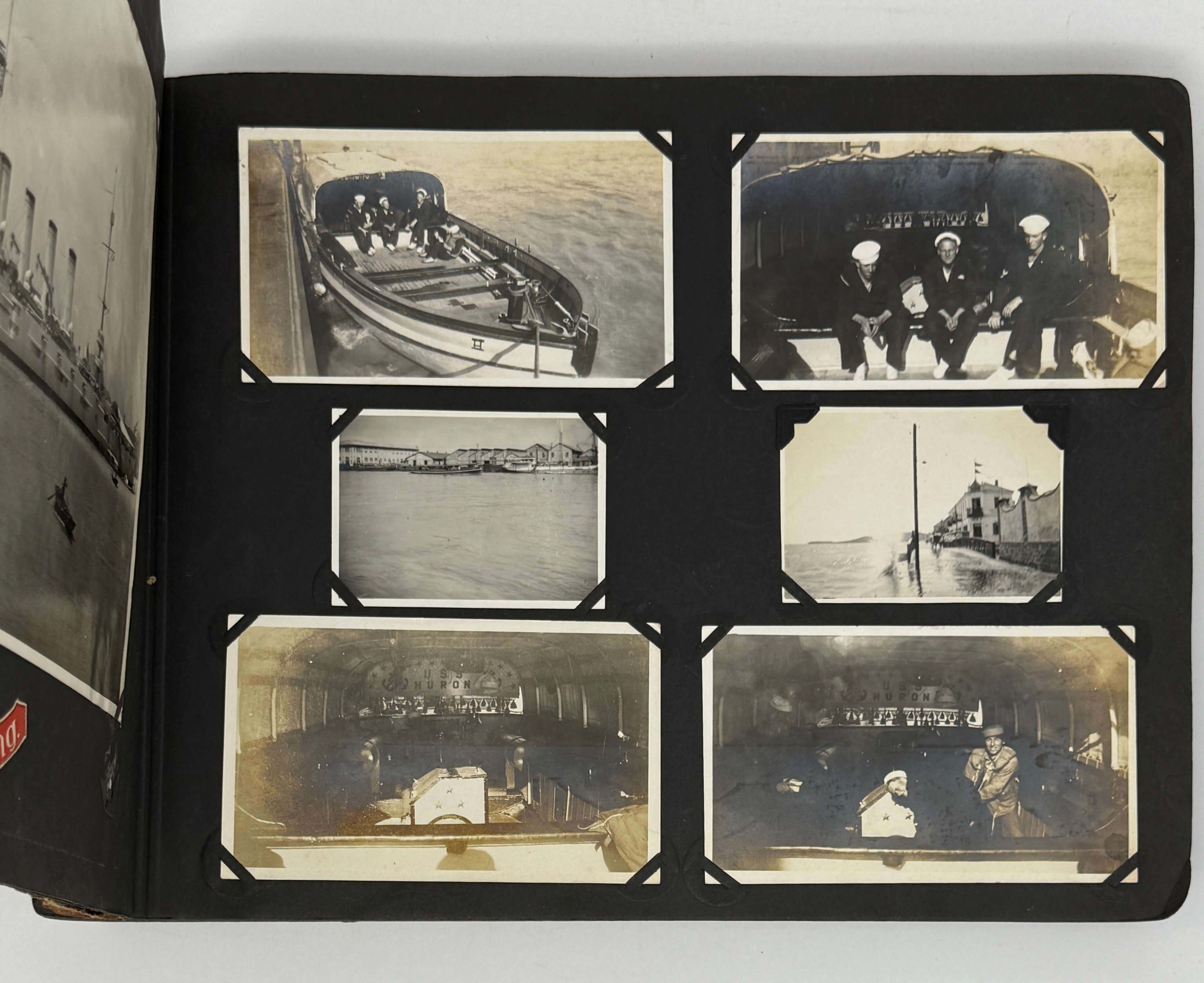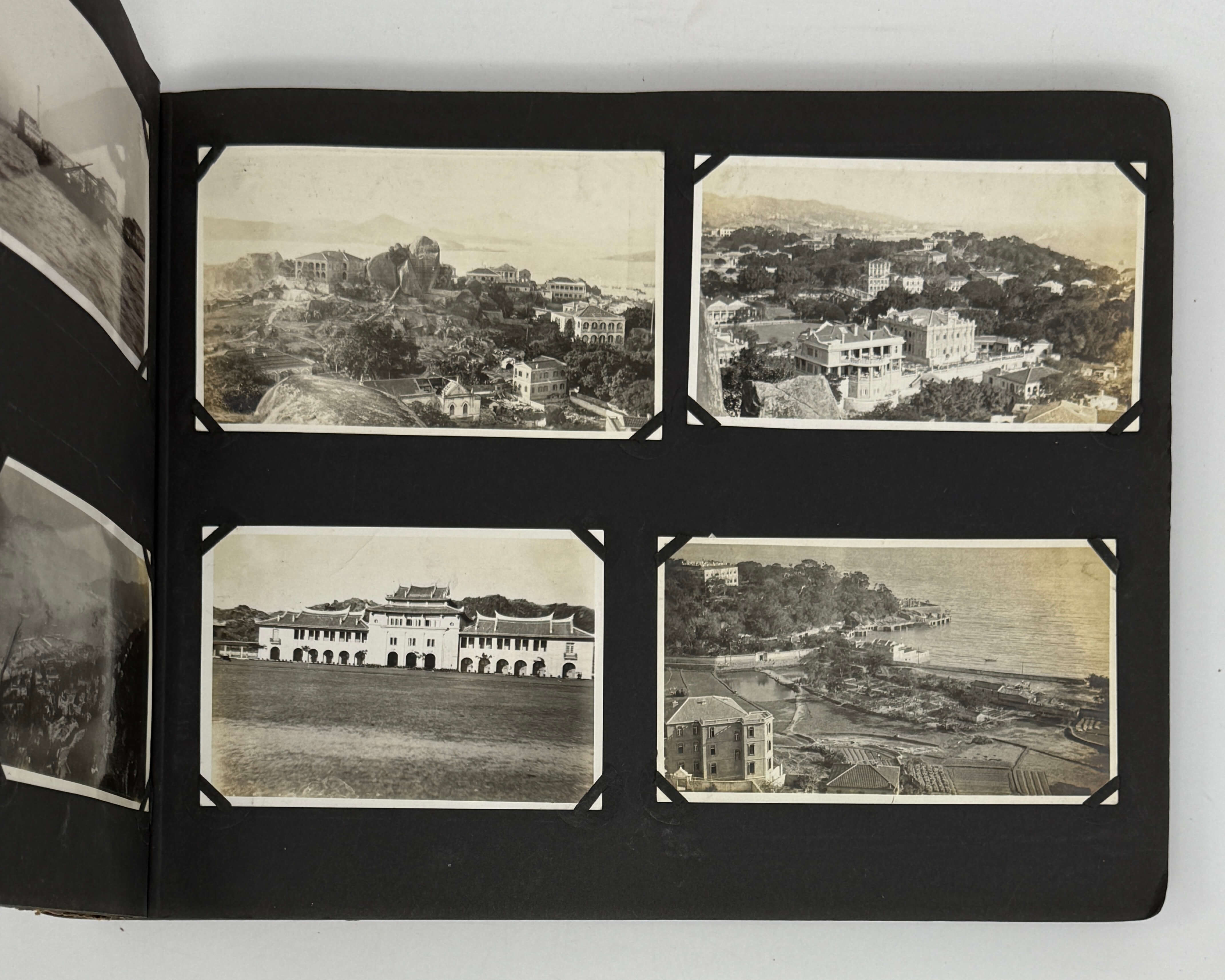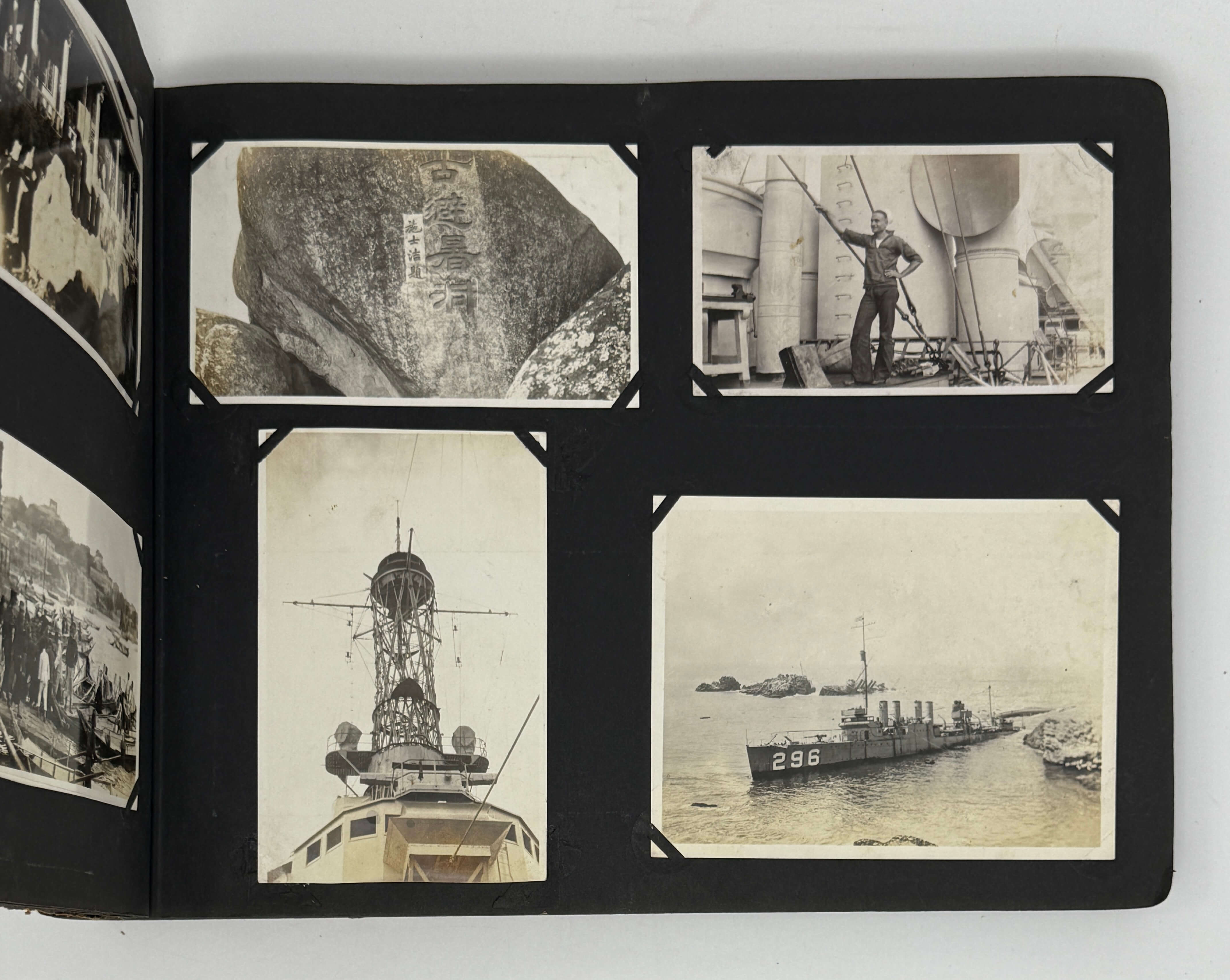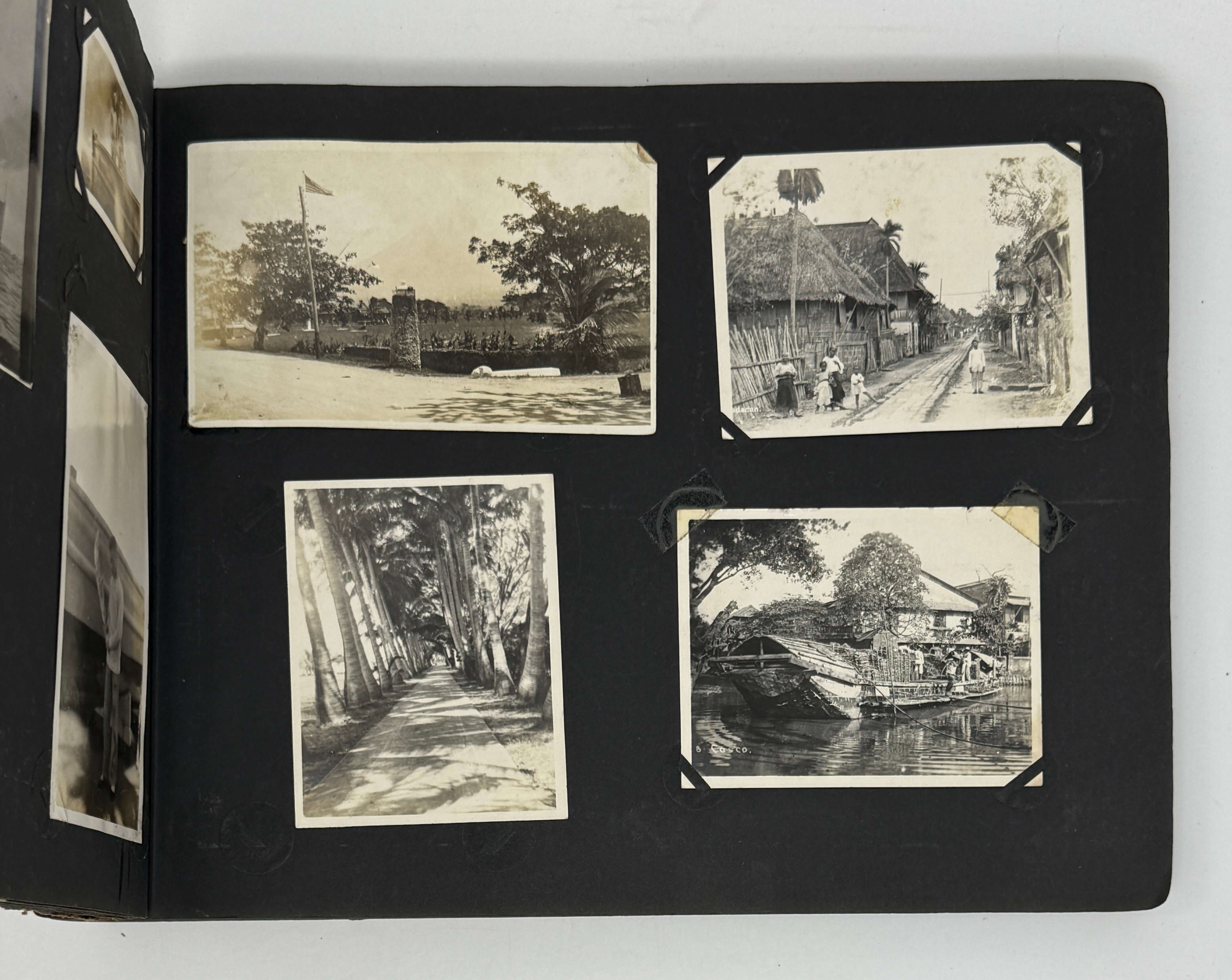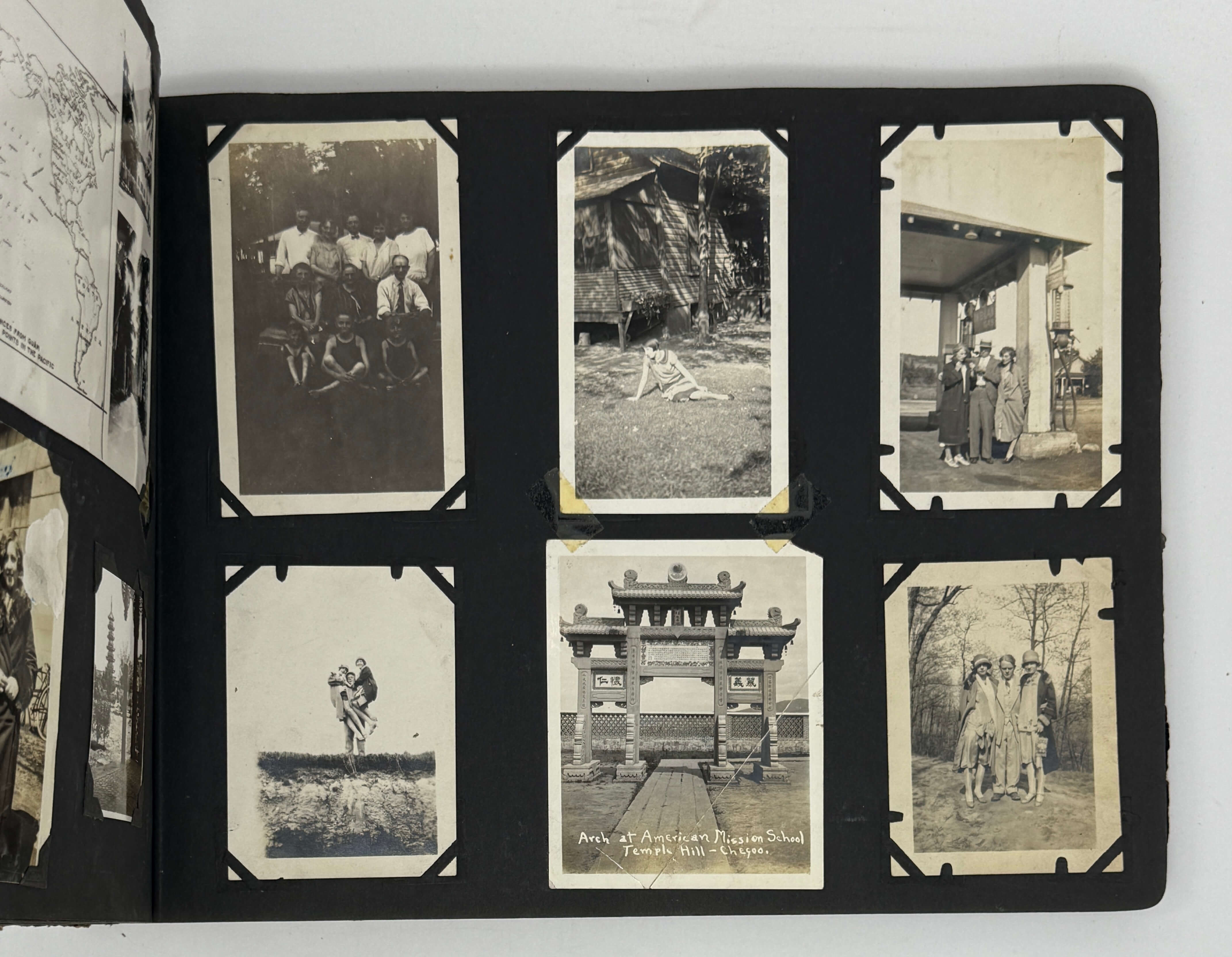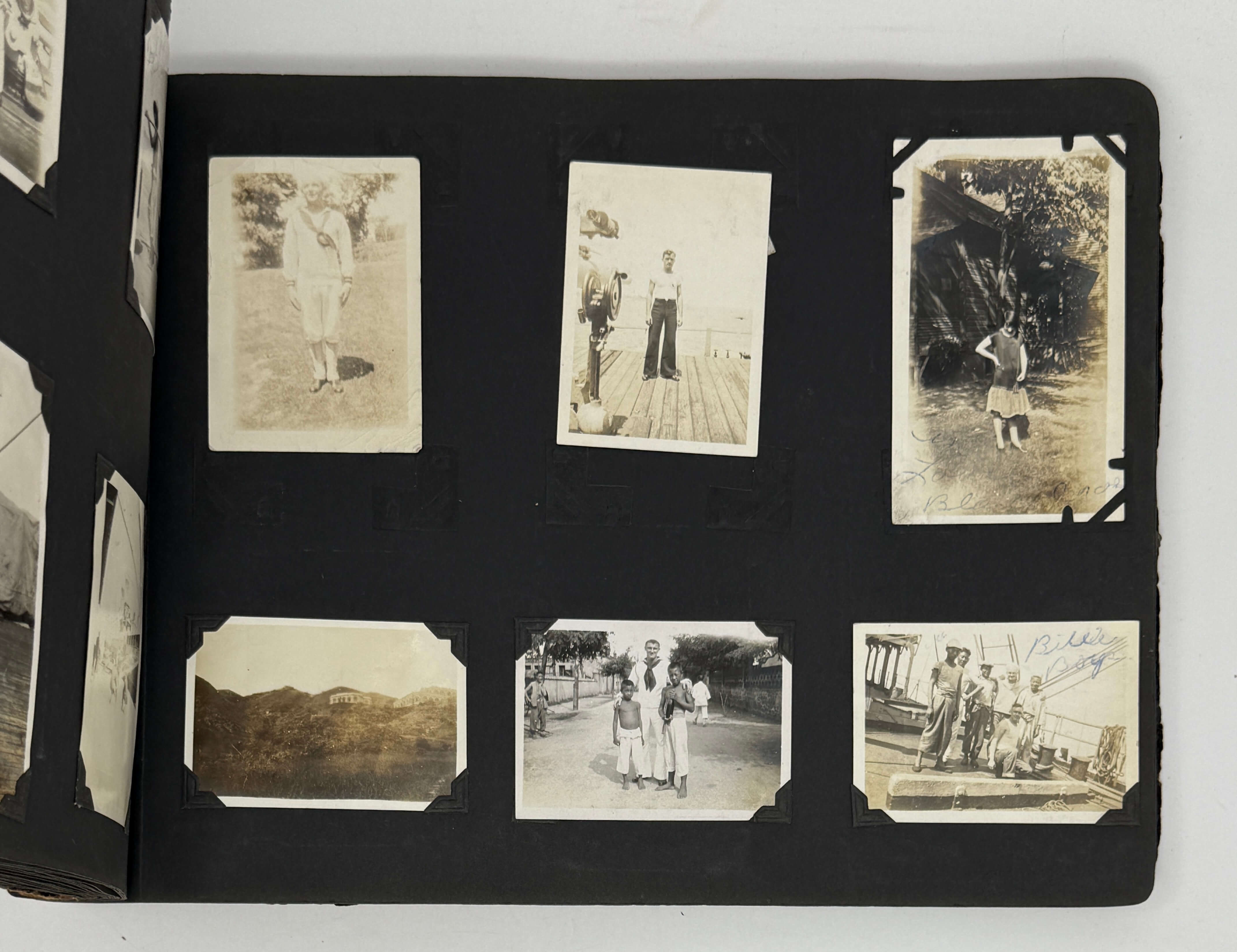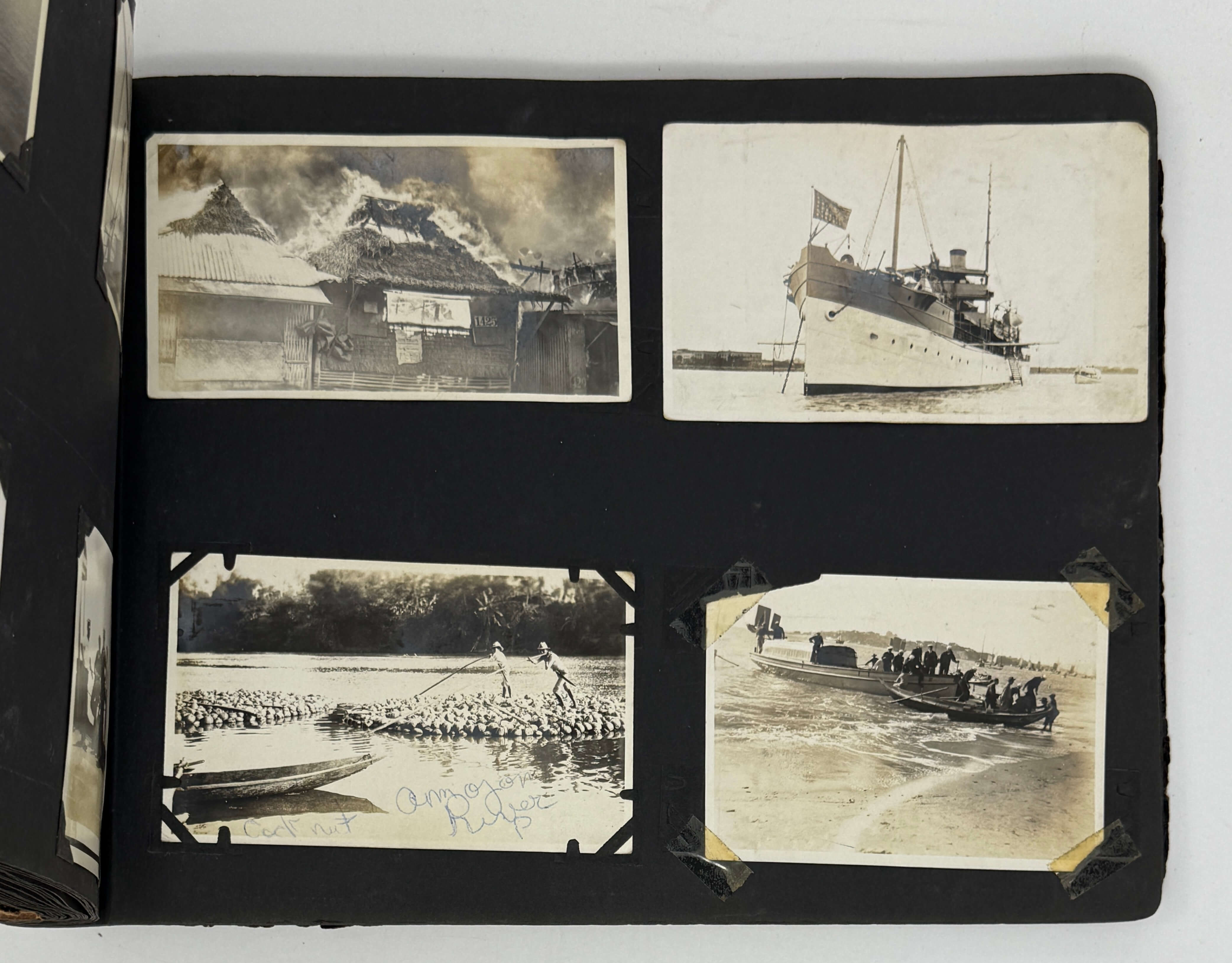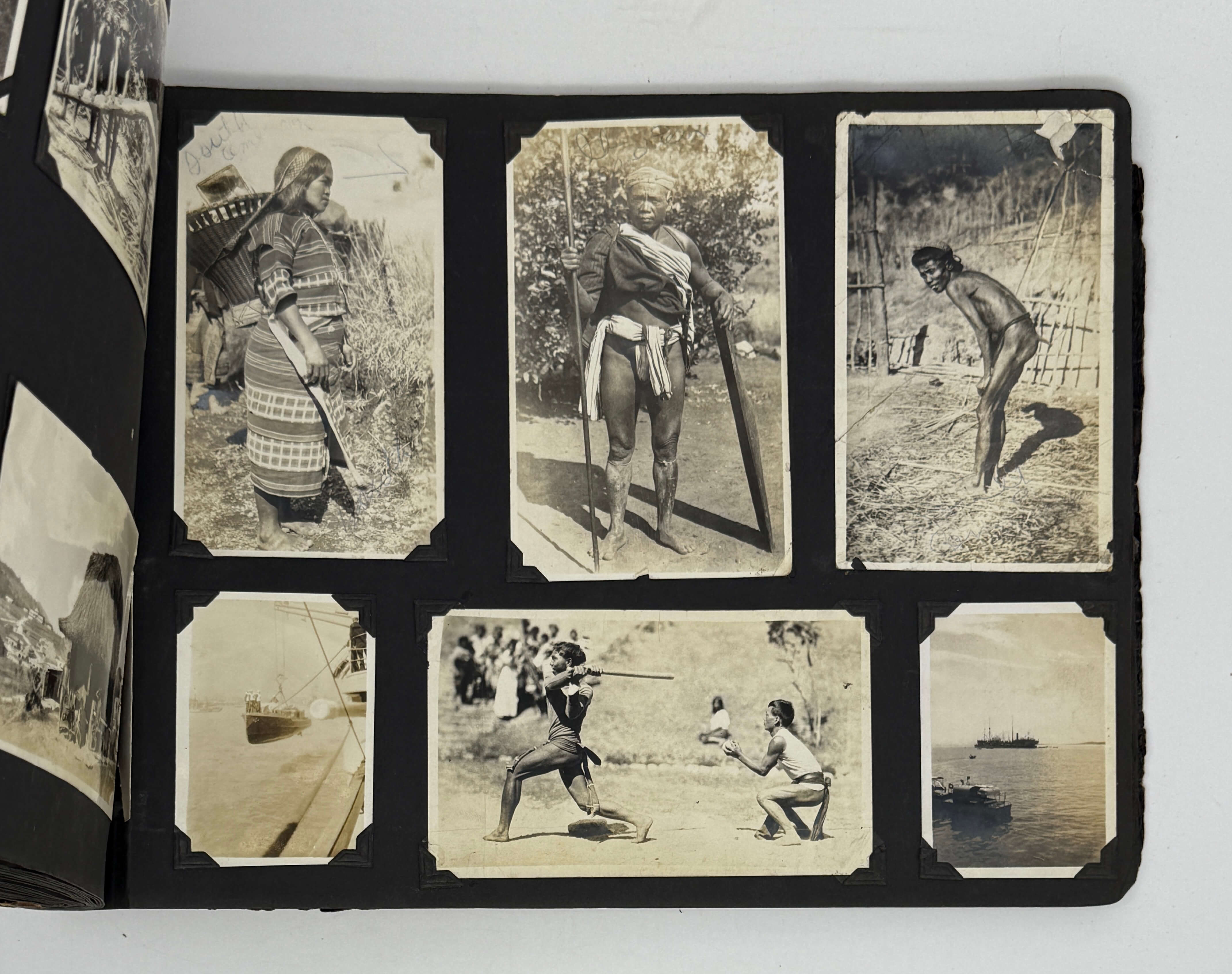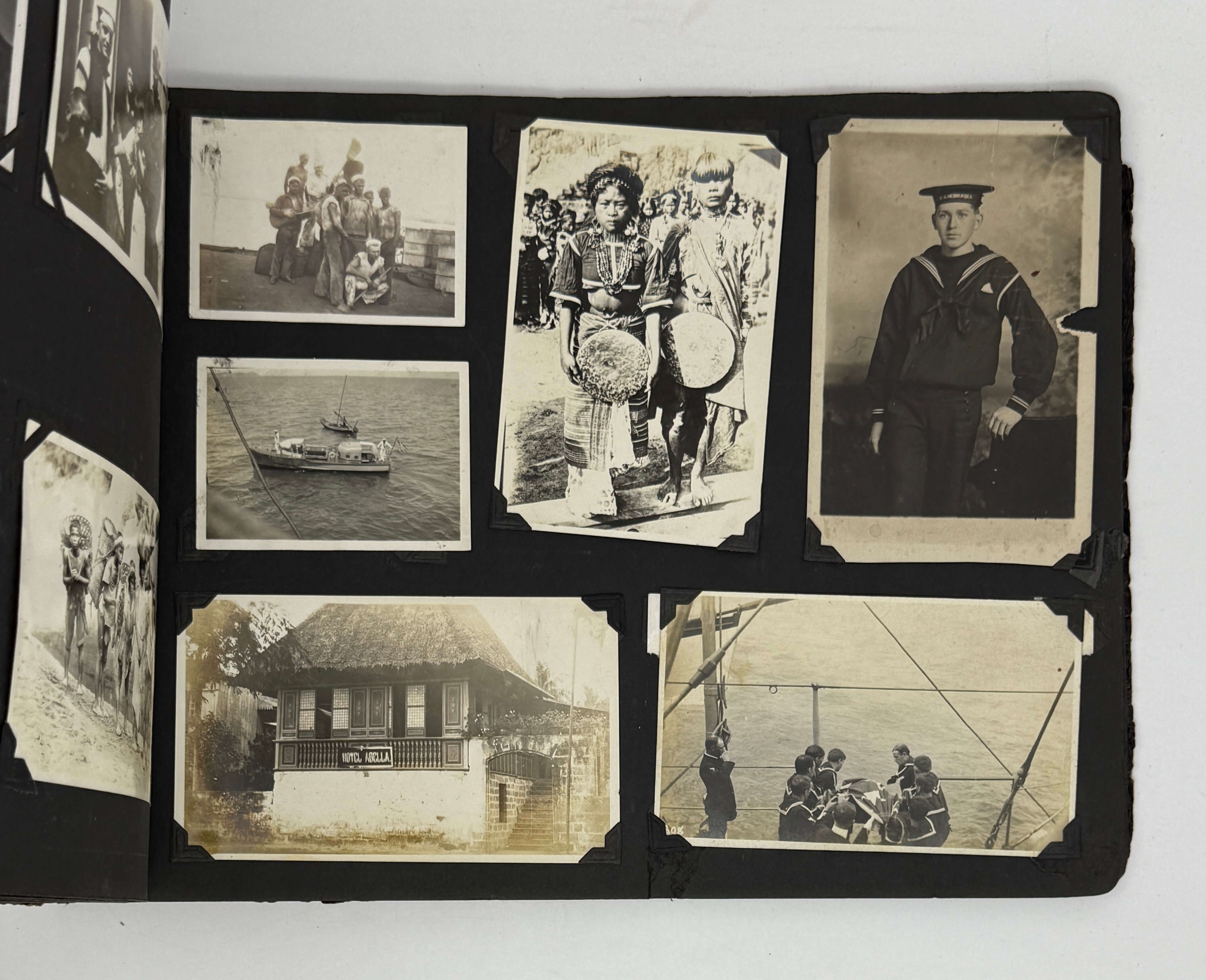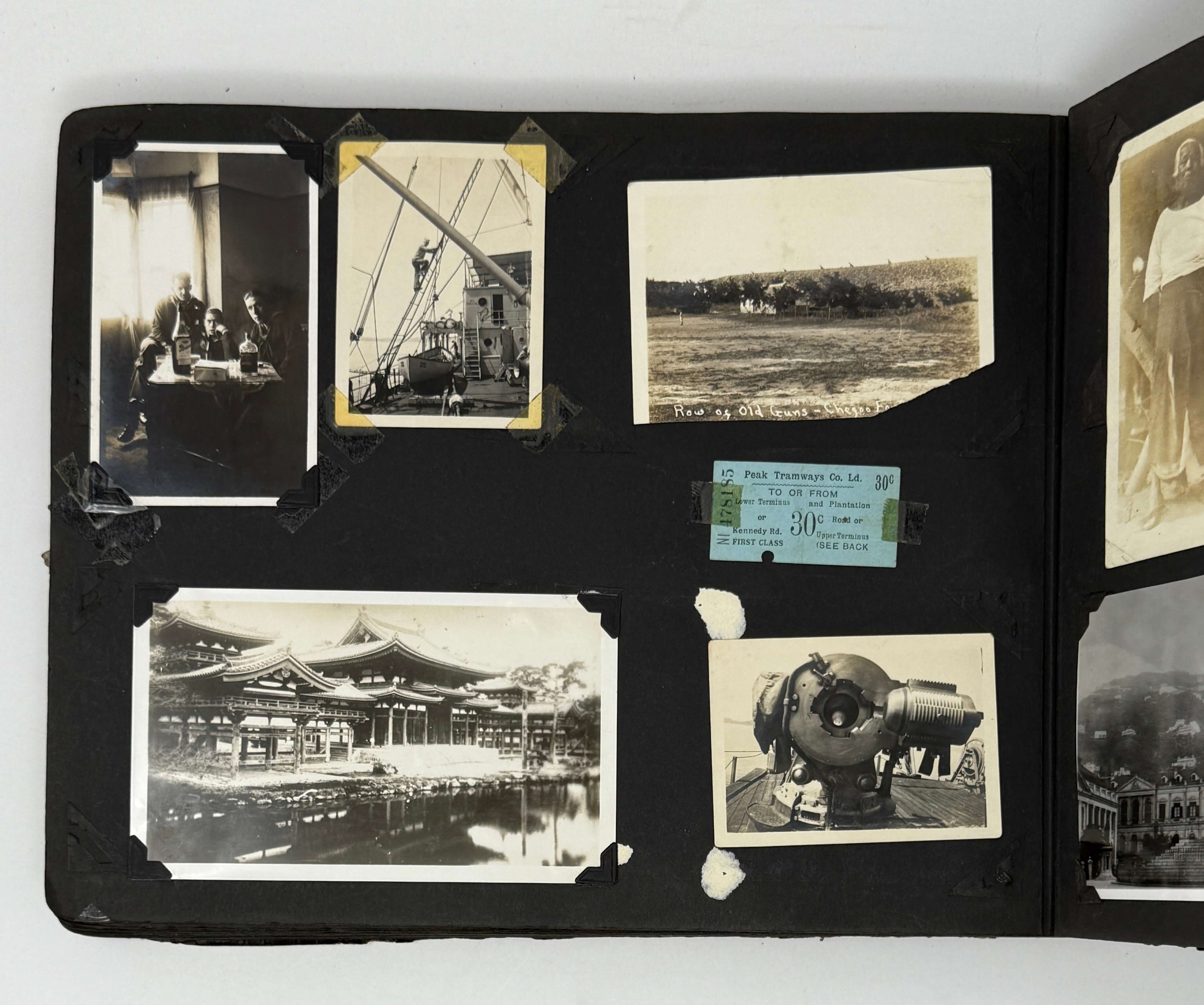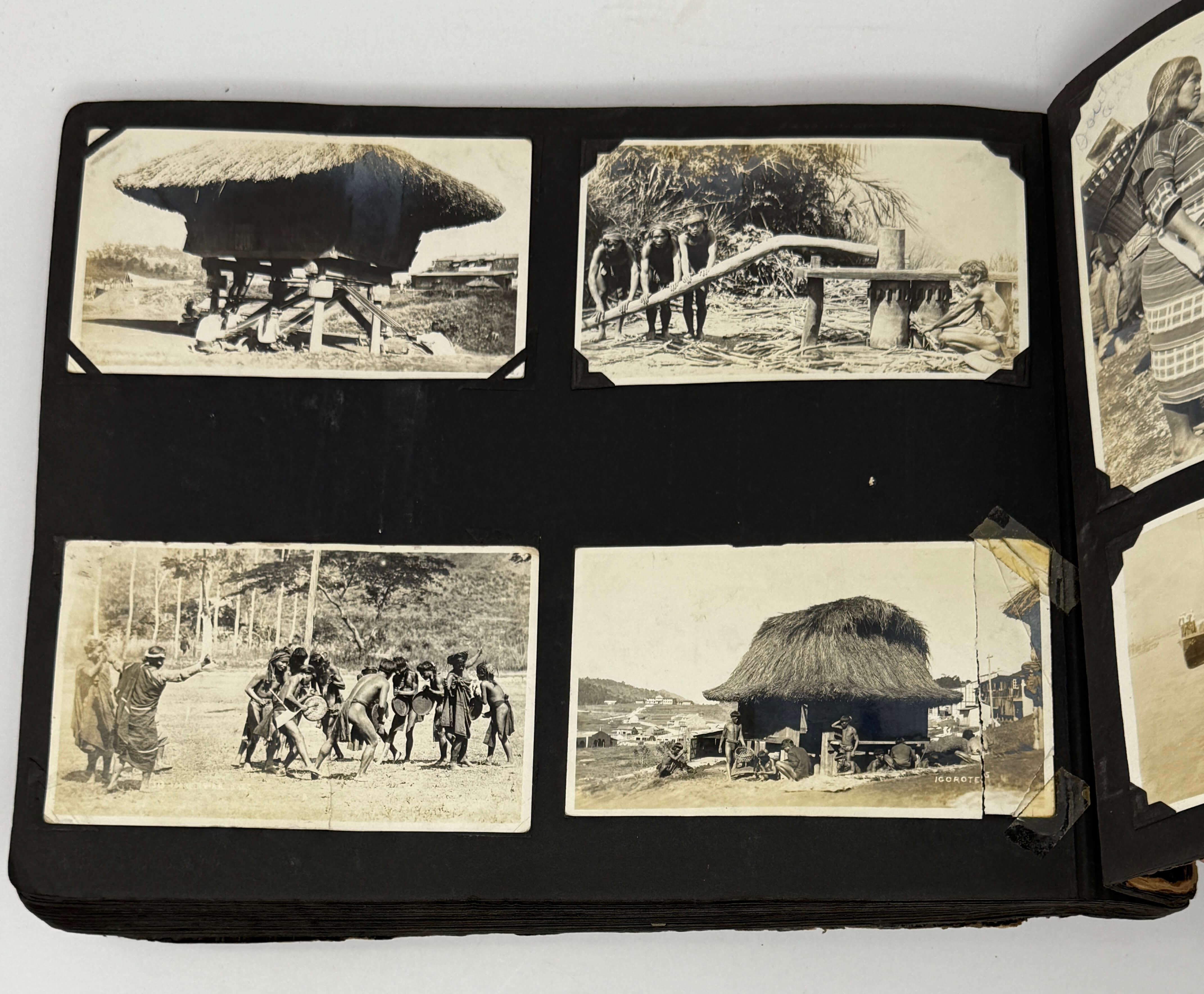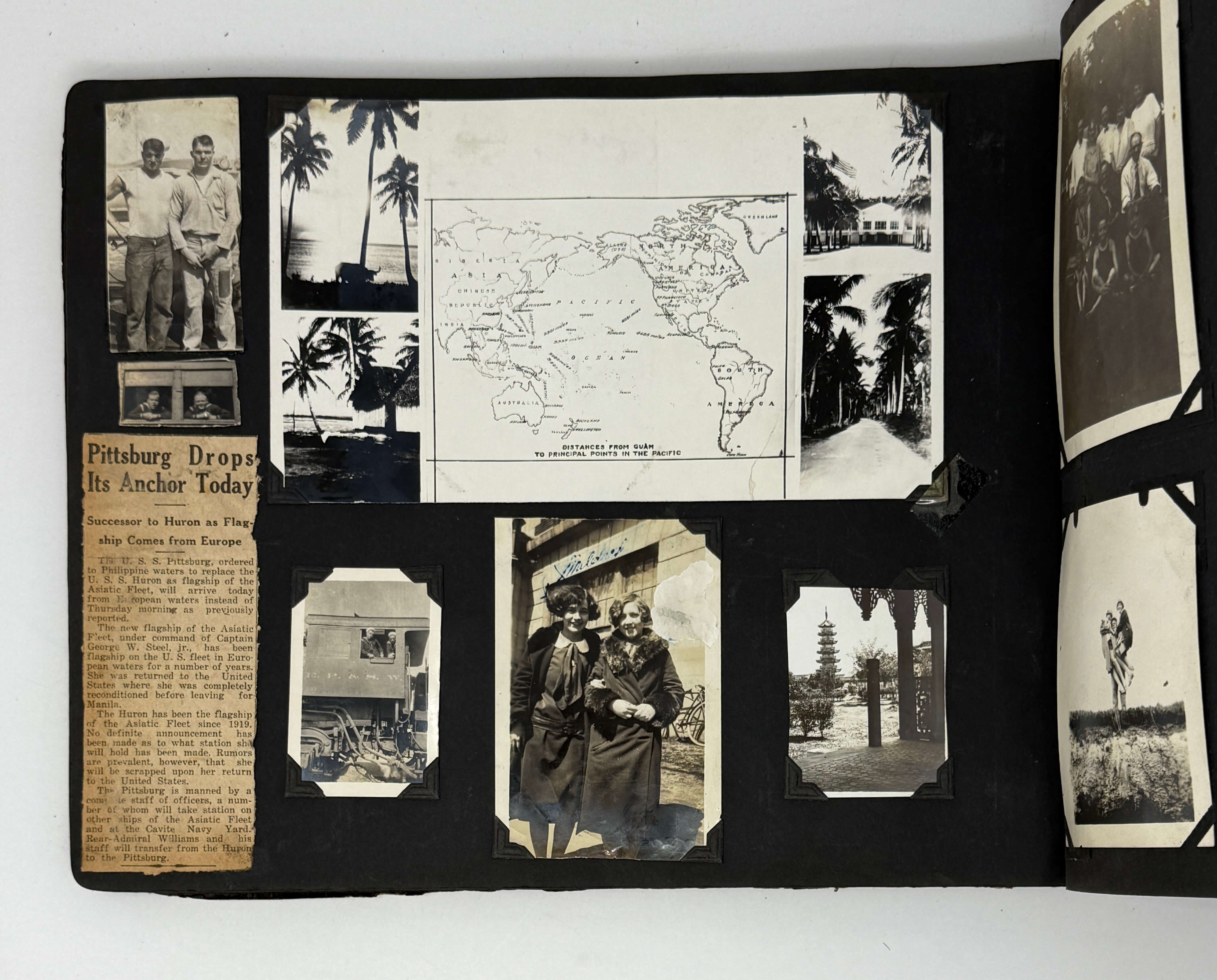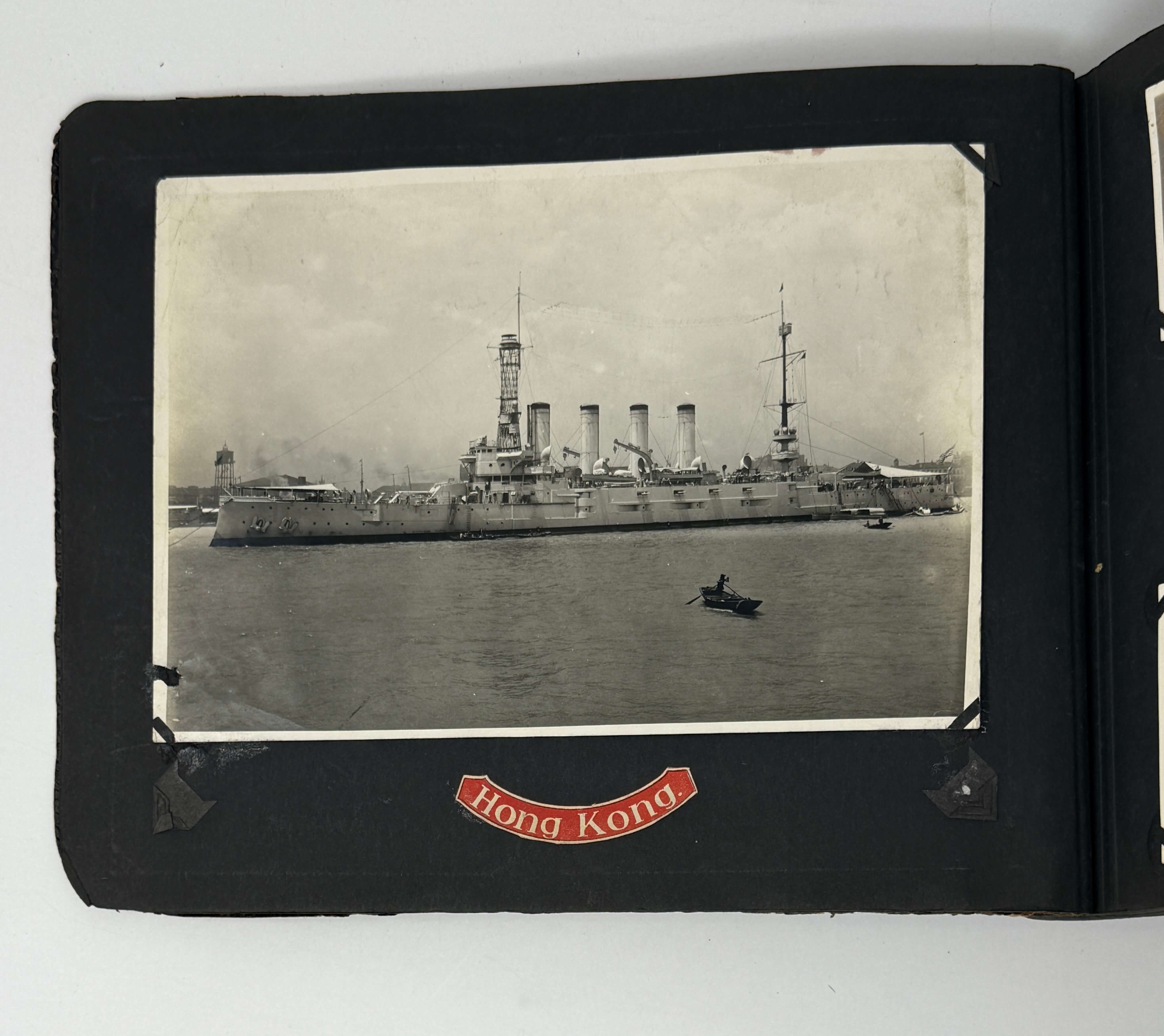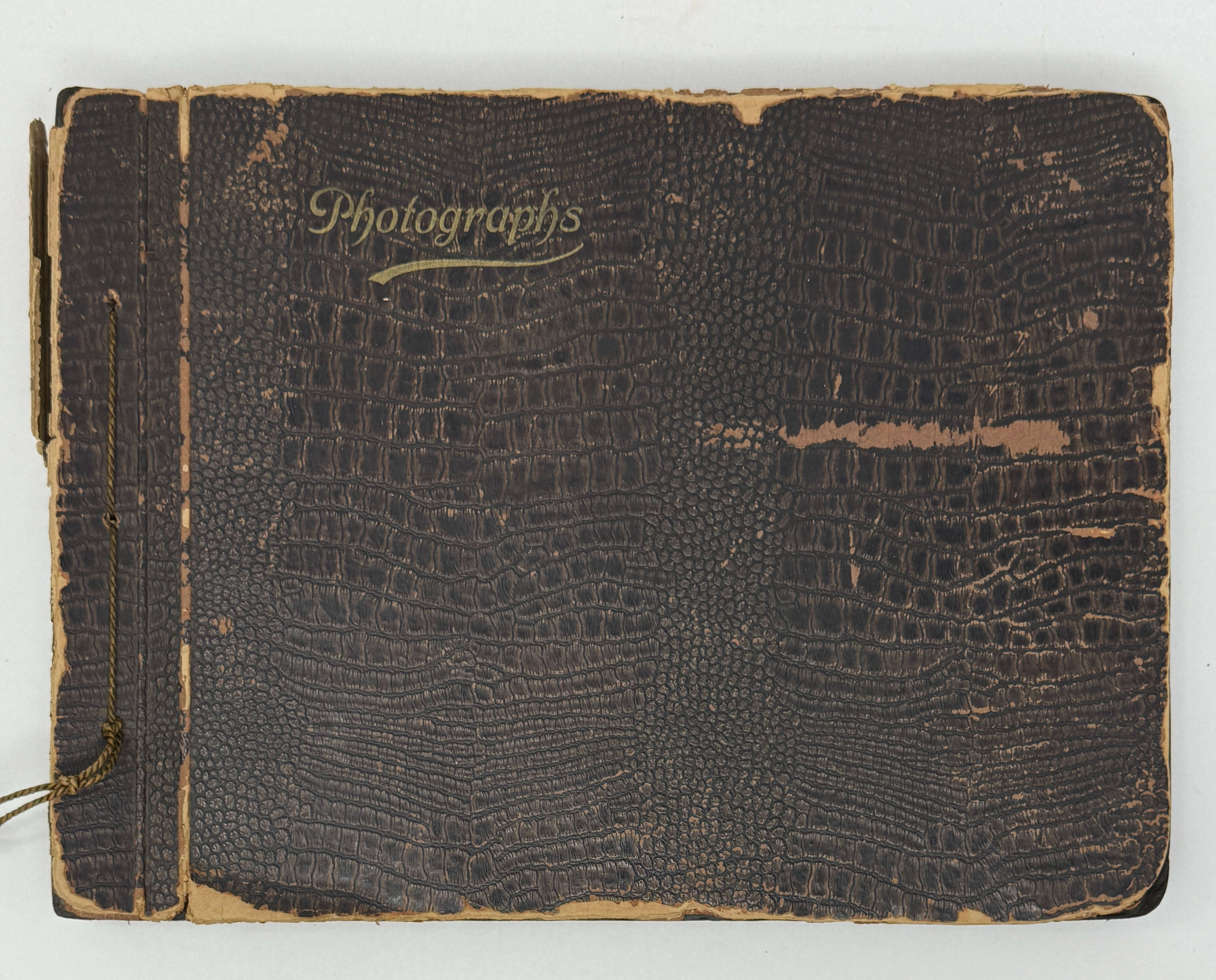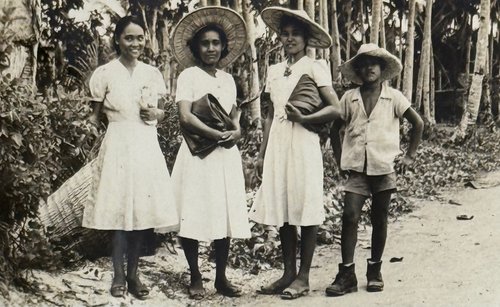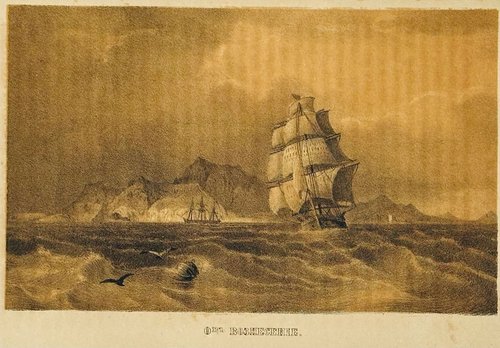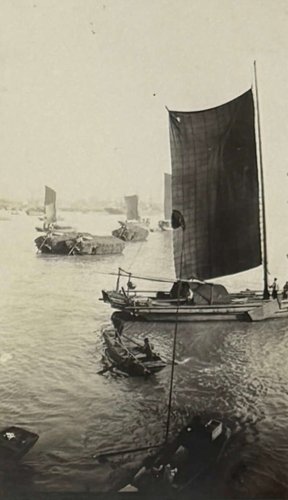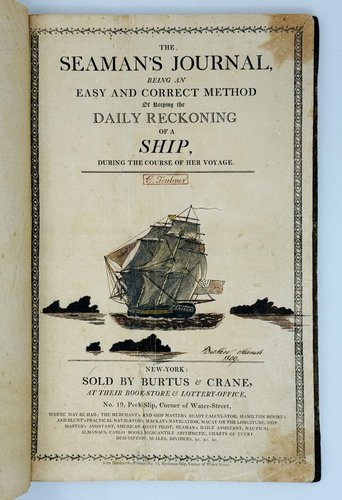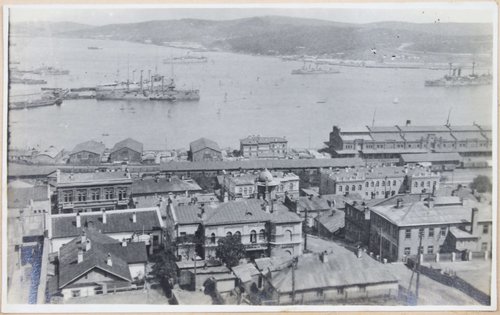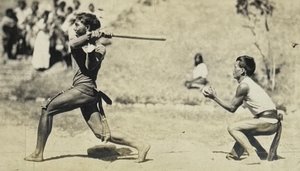


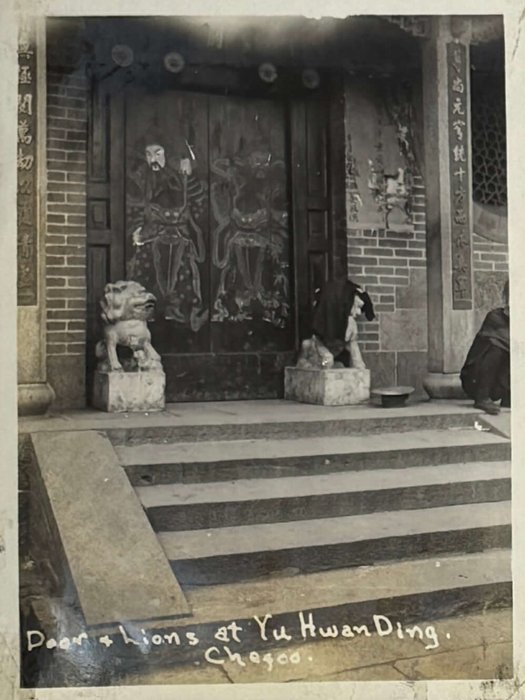
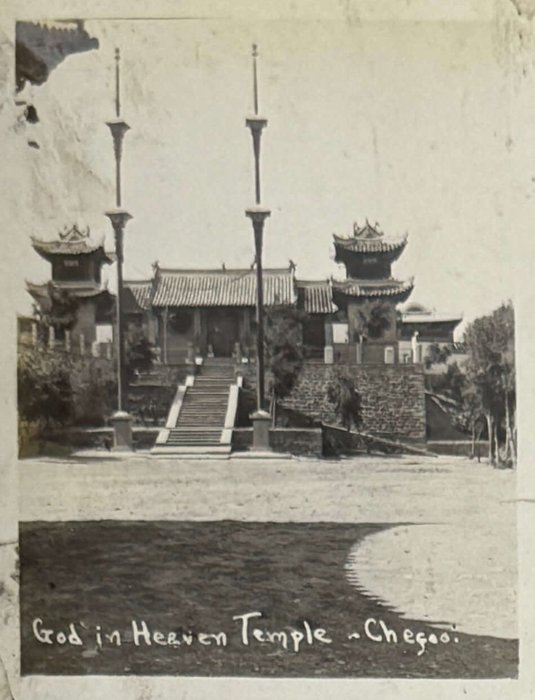
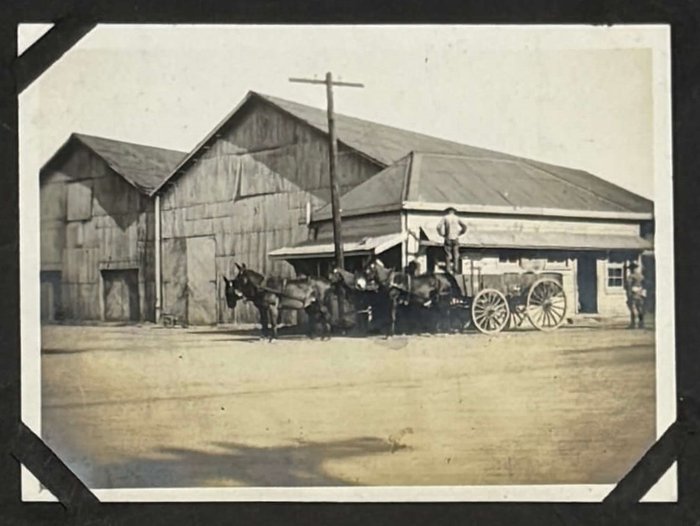
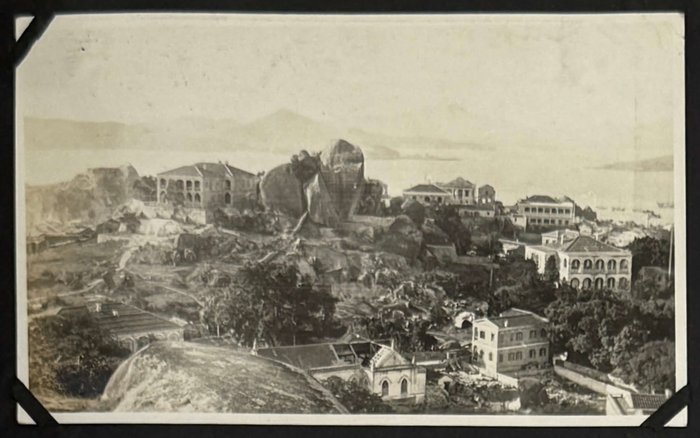
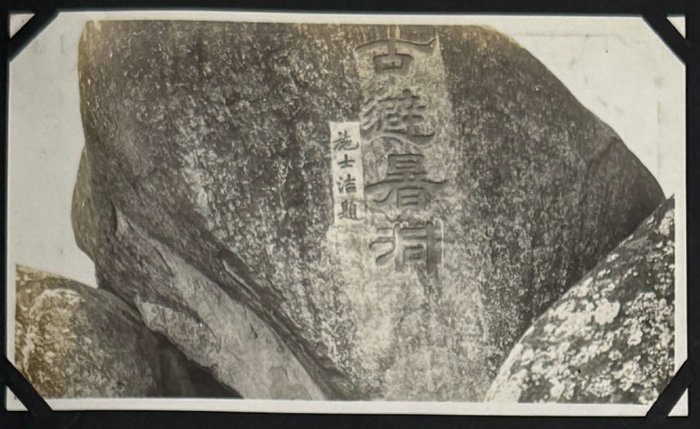
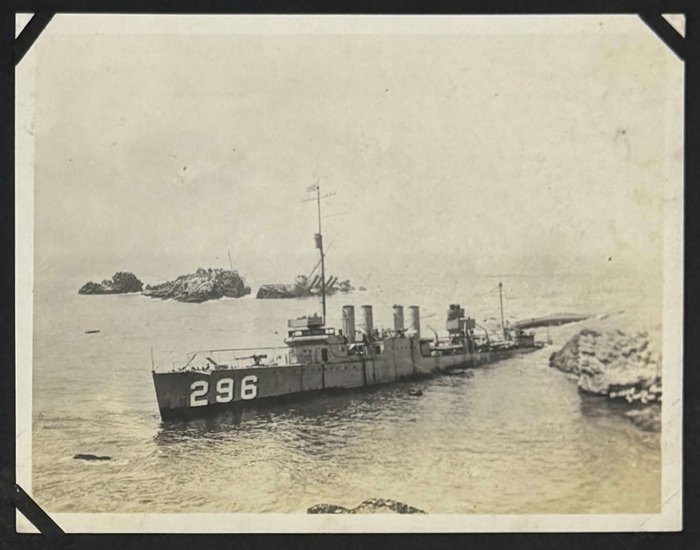
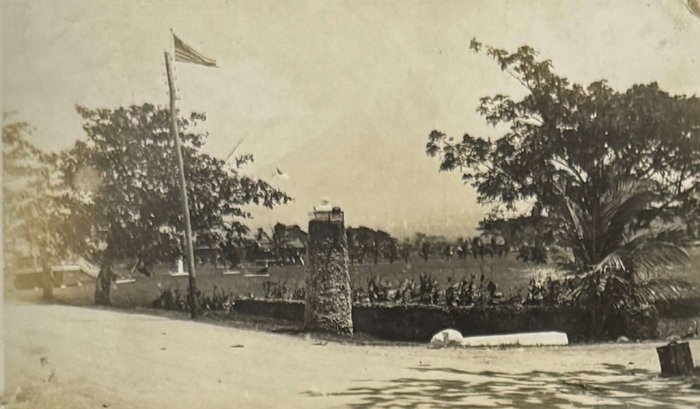
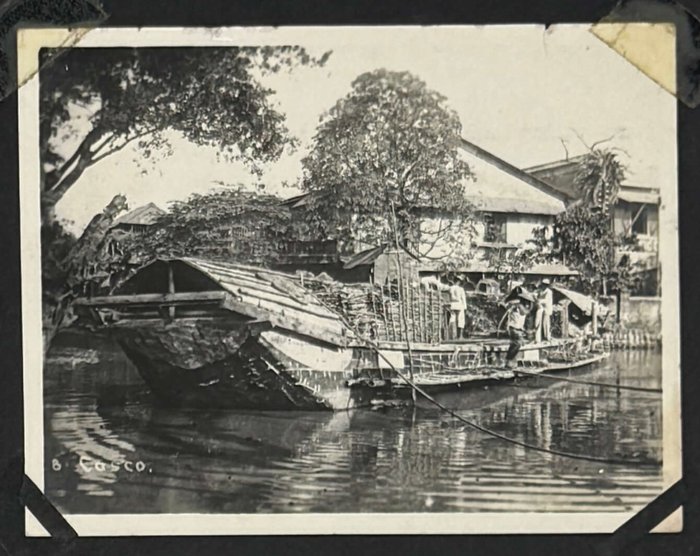

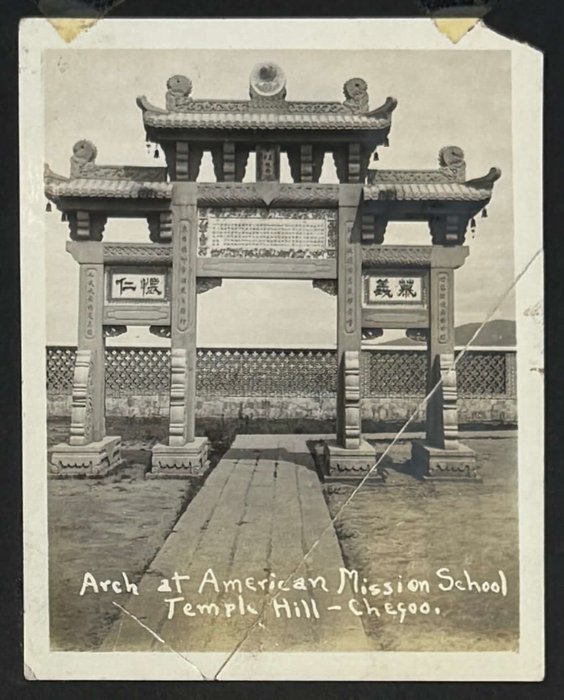
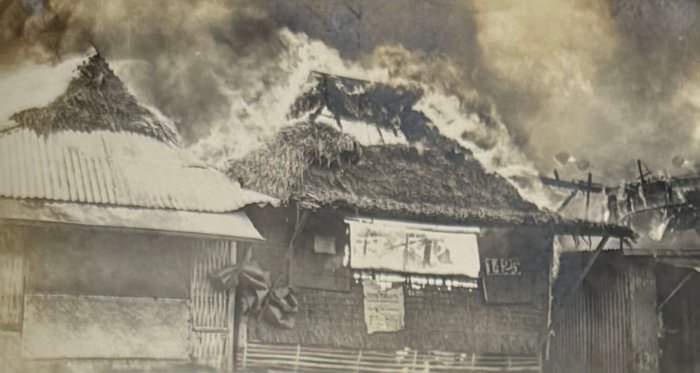
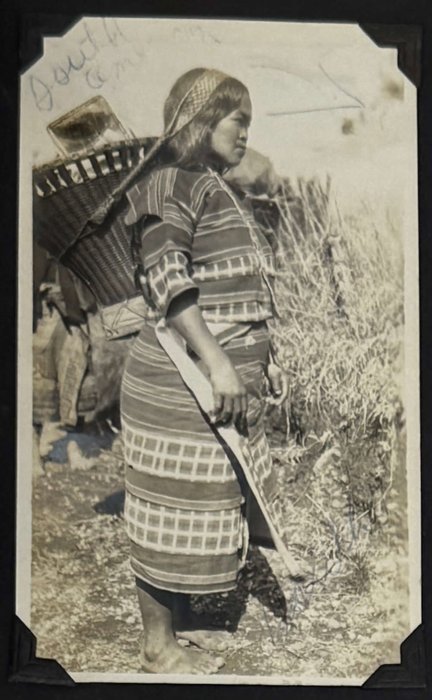
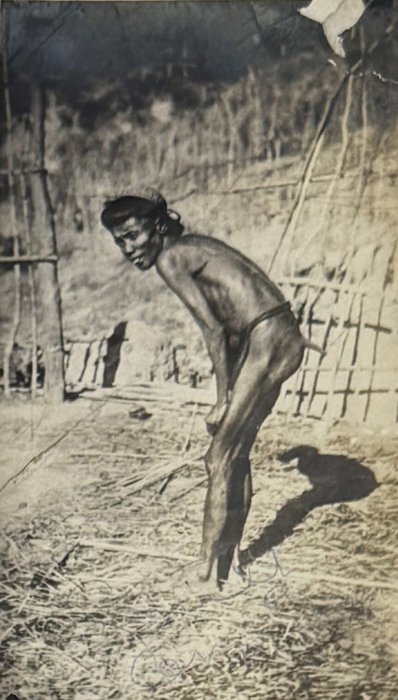
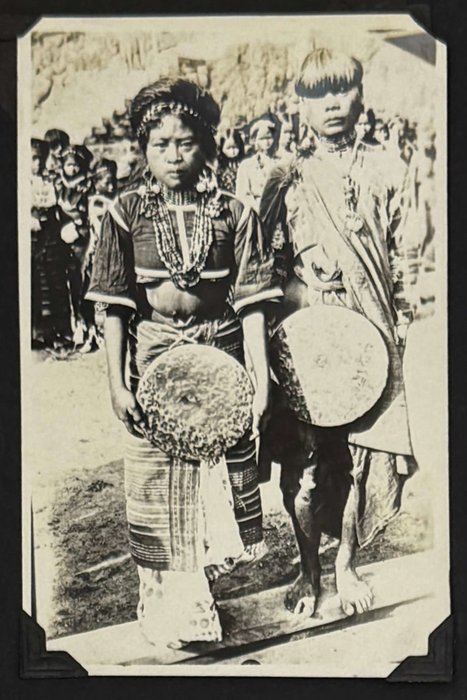
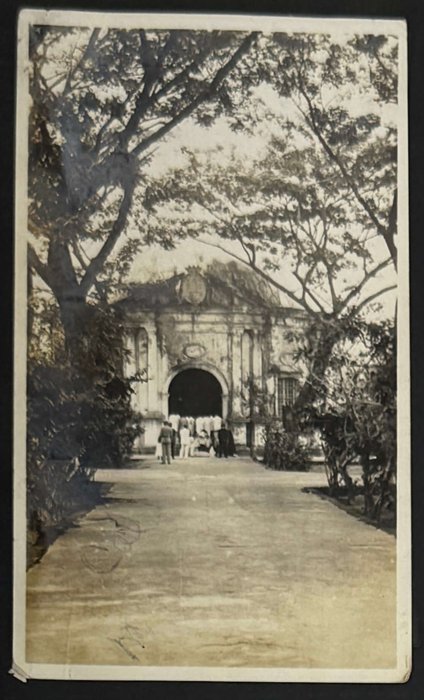
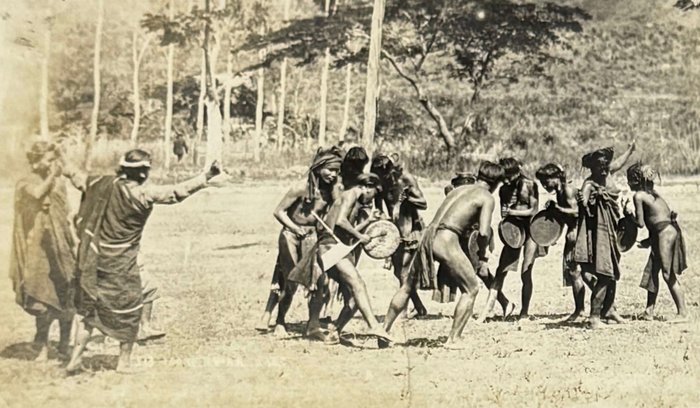
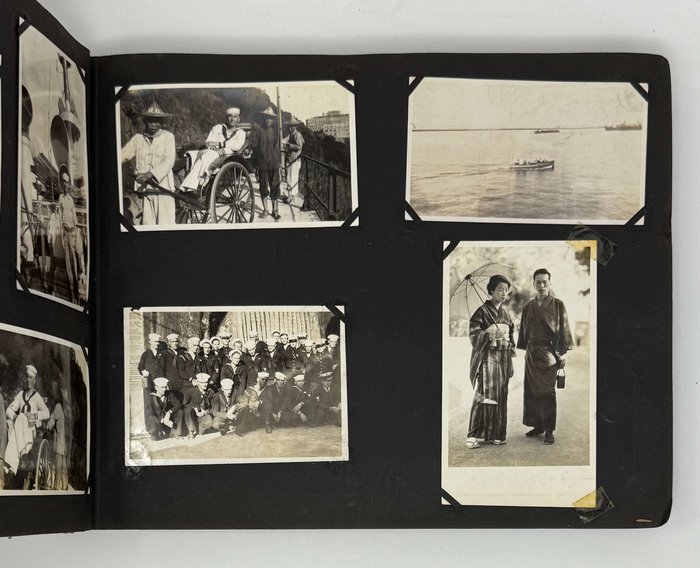
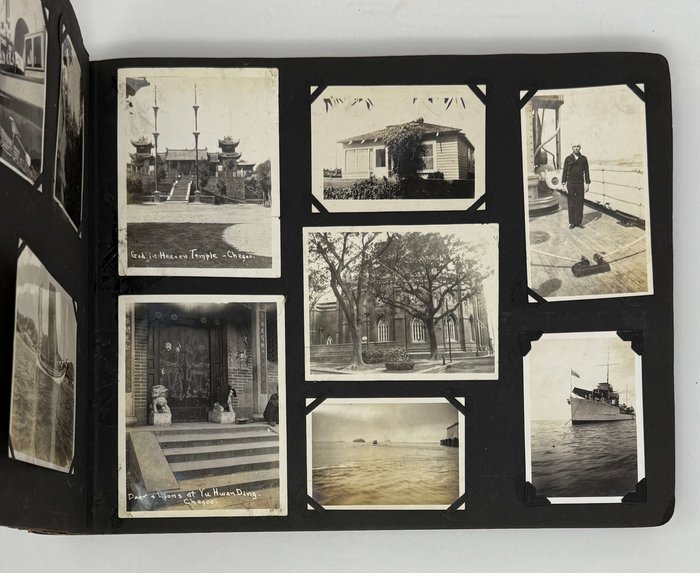
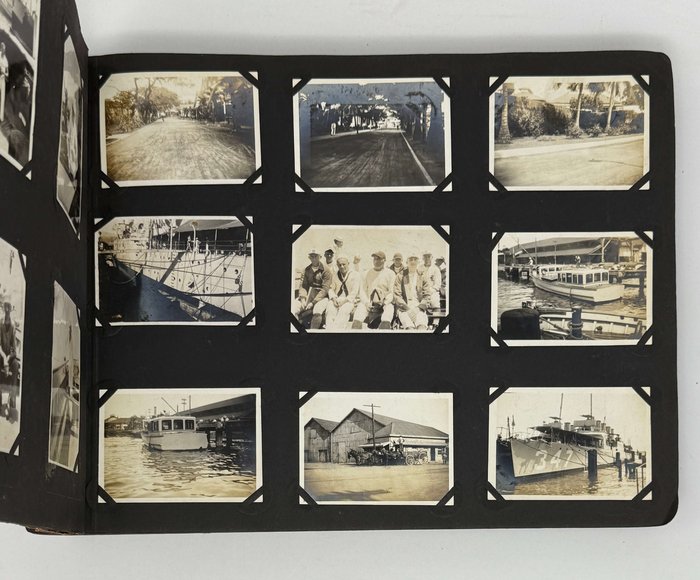
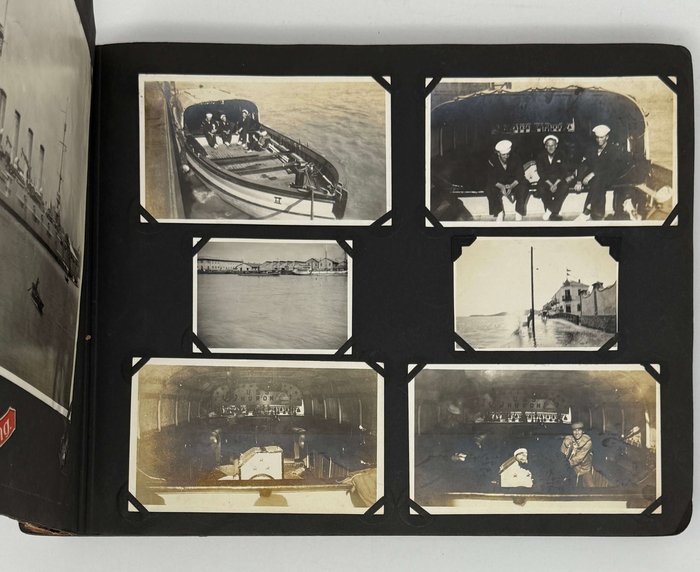
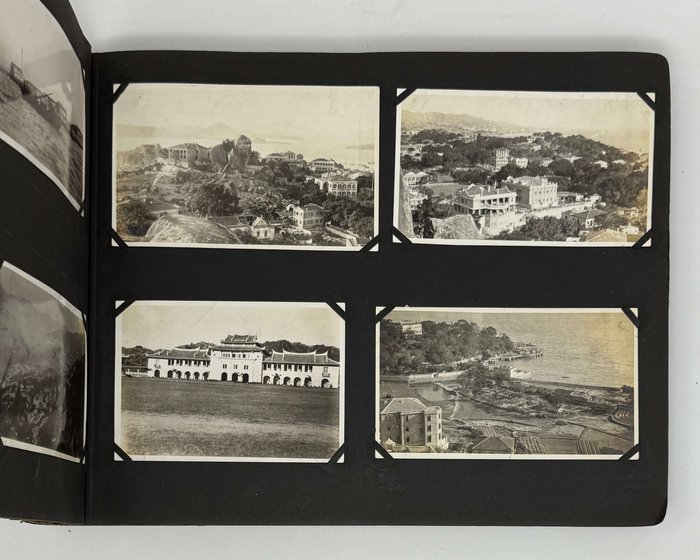
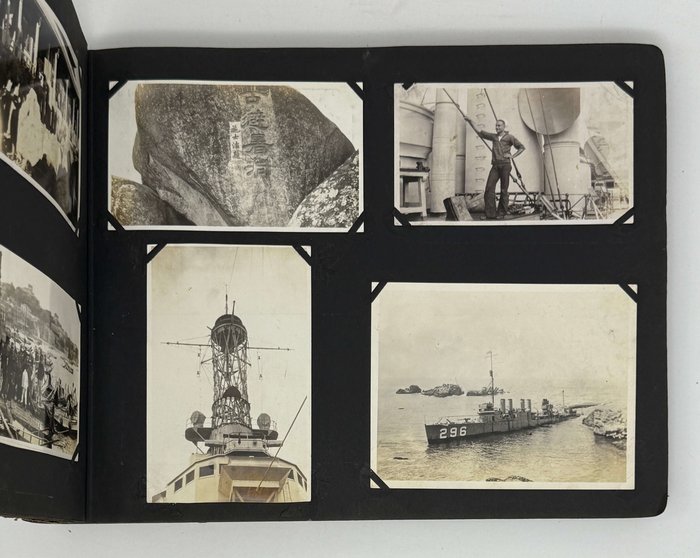
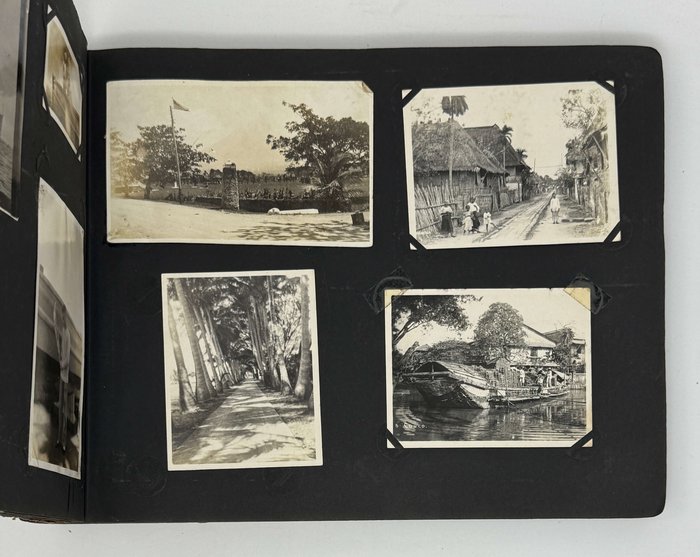
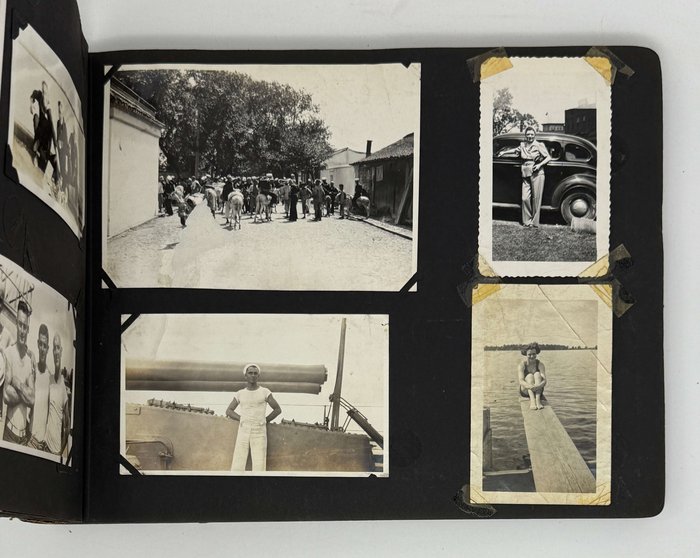

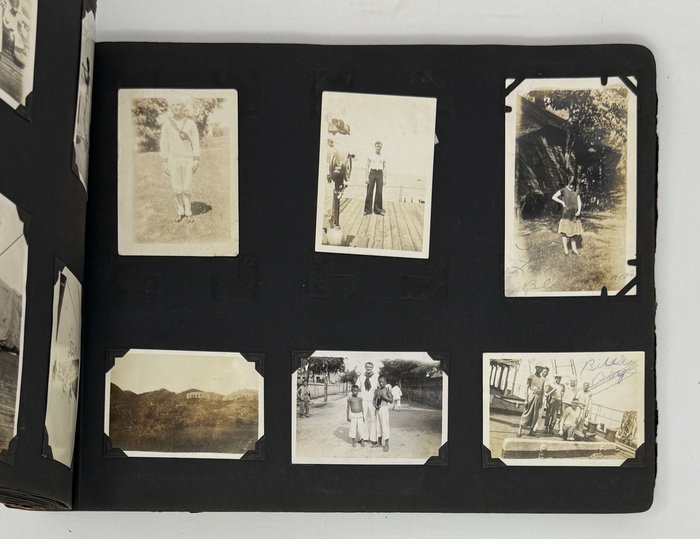
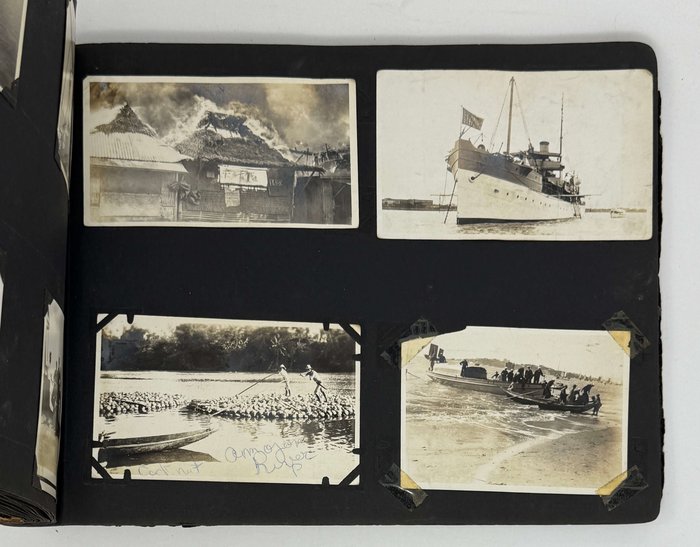
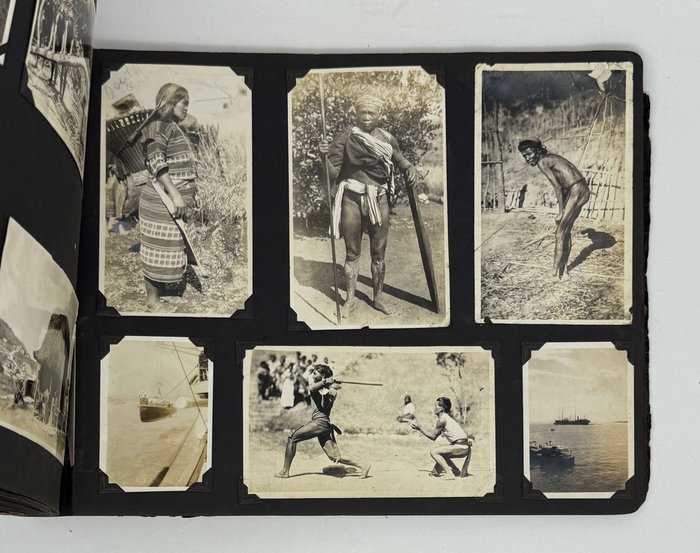
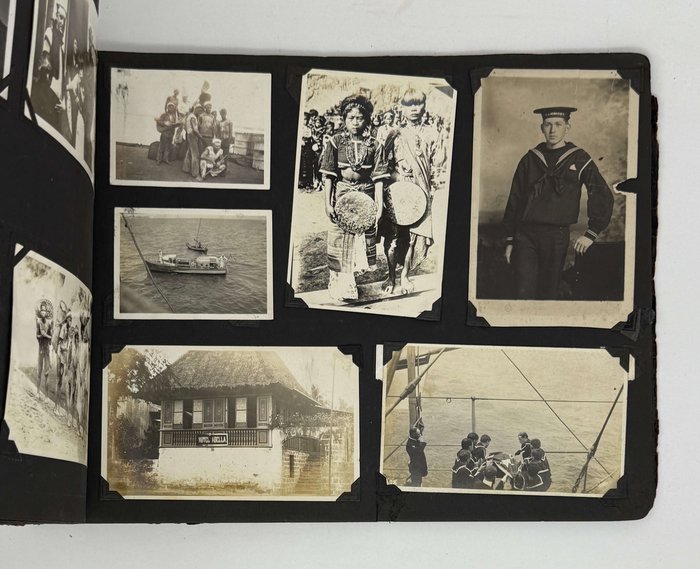
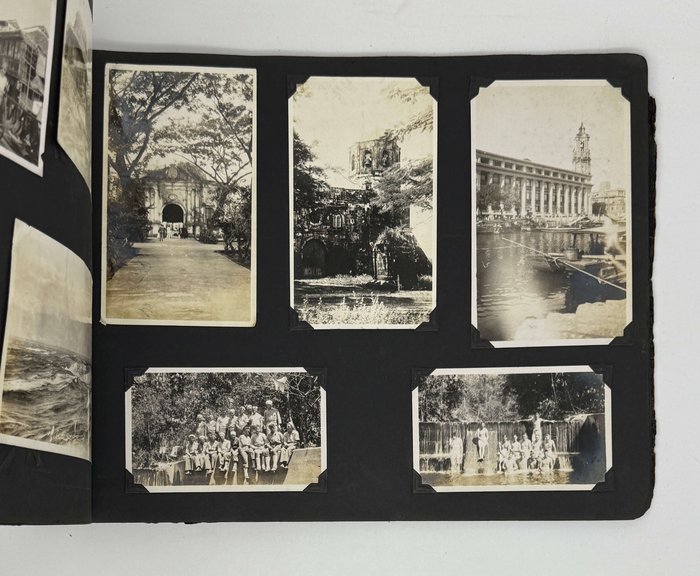
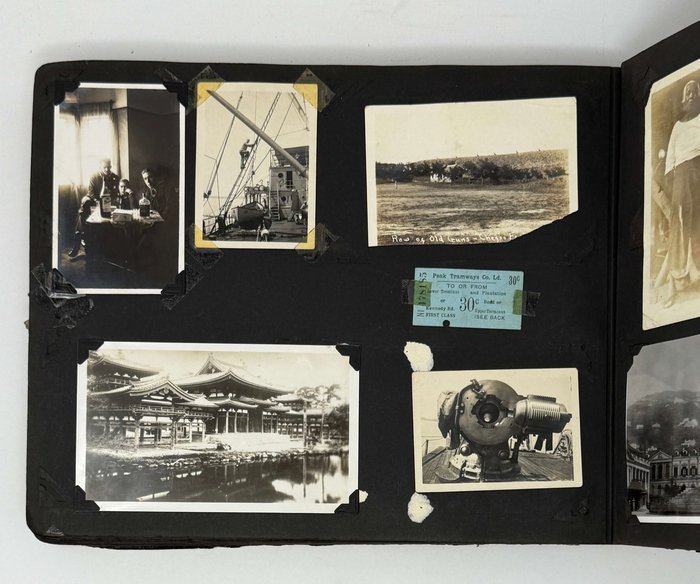
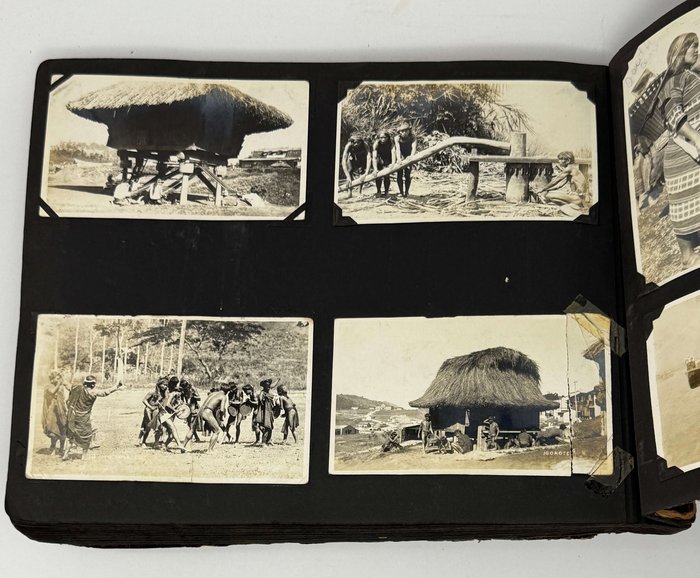
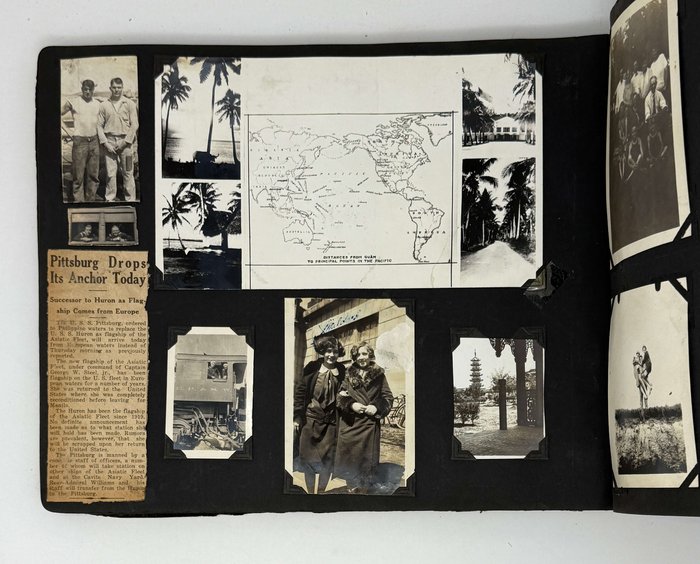
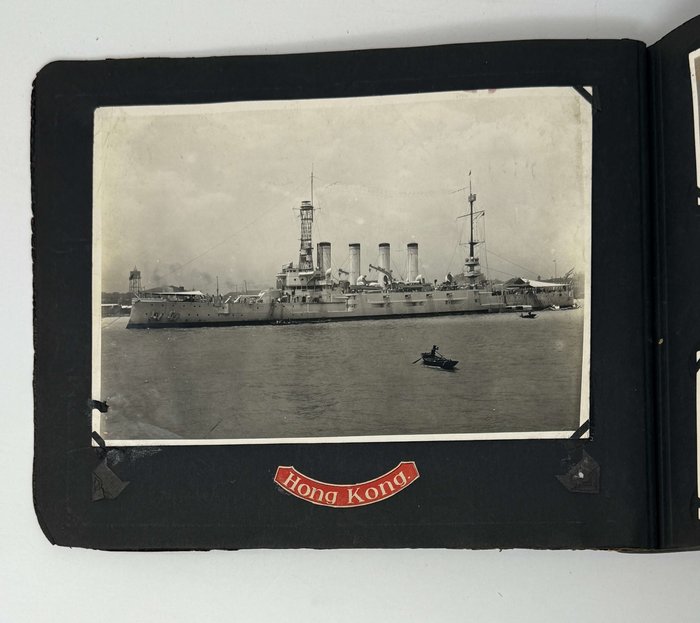
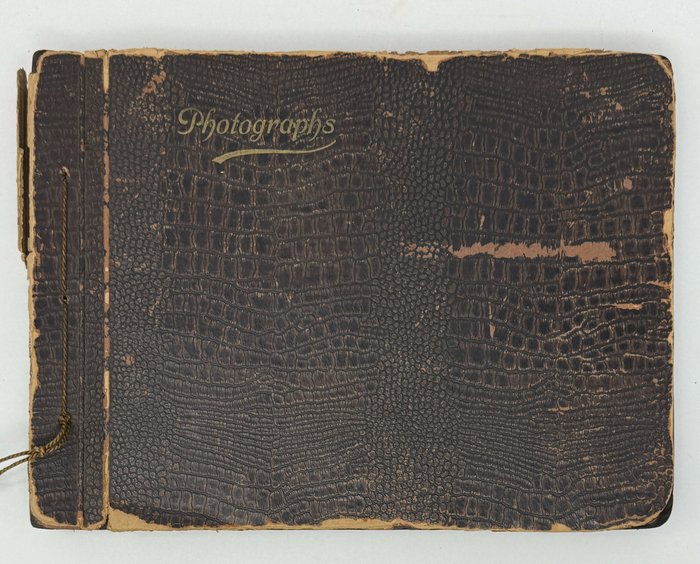
#PE54
Ca. 1920s
Oblong Folio album (ca. 25x33 cm or 10 x 13 ¼ in). 30 card stock leaves. With ca. 330 mounted original gelatin silver photos, including five large images from ca. 19,5x26 cm (7 ¾ x 10 in) to ca. 17,5x24 cm (7 x 9 ½ in); the rest of the photos are from ca. 12,5x20,5 cm (4 ¾ x 8 in) to ca. 4,5x6,5 cm (1 ¾ x 2 ½ in). Nine photos are captioned in negative; at least eighteen with ink manuscript captions on recto or verso. With seven mounted period newspaper clippings or ephemera. Period brown faux leather album fastened with a string; gilt-lettered title “Photographs” on the front cover. Binding rubbed, with chipping and losses on extremities, over a dozen photos with creases, losses of corners or scratches, two or three photos possibly previously removed, A few photos mildly faded or with mild silvering, but overall a very good album of interesting photos.
Interesting extensive collection of original gelatin silver snapshot and studio photos, taken and collected by an American sailor during his service on U.S.S. “Huron” and “U.S.S. “Black Hawk” in the Southwest Pacific in the 1920s. Former U.S.S. South Dakota (1908-1920), U.S.S. “Huron” served as flagship of the U.S. Asiatic Fleet in 1919-1926, “operating in Philippine waters during the winter and out of Shanghai and Yantai during the summer” (Wikipedia). In 1923, the ship participated in the relief operation in Yokohama and Tokyo after the Great Kanto earthquake. U.S.S. “Black Hawk” served in the Asiatic Fleet for twenty years (1922-1942), cruising between various locations in the Philippines (Manila, Olongapo) and China (Hong Kong, Shanghai, Amoy/Xiamen, Tsingtao/Qingdao, and Chefoo/Yantai). During WW2, it served in Hawaii and Kodiak, Alaska.
Most images in the album show the U.S. naval ships where the compiler served and their crew members, including a large group portrait of sailors wearing the U.S.S. “Huron’s” sports uniform and a large view of U.S.S. “Huron” in Hong Kong harbour. The smaller photos include numerous scenes taken on board (mostly of U.S.S. “Black Hawk”) with the sailors working or resting (some are captioned, i.e. “scrubbing gangway in Yellow Sea, en Chefoo to Shanghai, me with pipe in mouth, B.H.,” “just like convicts,” “B.H. looking forward; x - is our movie screen and o - is the movie house,” “main mast,” &c.), images of an official ceremony on board, naval exercises at sea (“firing a torpedo,” “standing by to fire 4 inch”), portraits of the crew members (several identified by the compiler, i.e. “[…?] Seaner, he is at the hospital in Peking now,” “F.J. Tancey from Fort Wayne, apt gun deck, Chefoo,” “Lewis R. Hand, he died the night we left Chefoo, from desentery [sic!],” “Wirth and Mardis”), &c. There are also views of the interior of U.S.S. “Huron’s” launch boat, the ship’s radio tower, “comforts of a man-of-war,” a view “taken from inside of Hawk, looking thru an air port, tin cans [ships] and the beach,” a launch boat “waiting for the Captain, Chefoo,” &c.
A series of photos show the U.S. naval ships in Chefoo (Yantai): “a small part of the Asiatic Fleet anchored in Chefoo;” “x – is were the cans go for shelter, when it gets bad, also the subs. They might slip there [sic!] anchor and get washed up on the shore. O. Chinese fort, Chefoo;” “tin cans coming in from fireing [sic!], Chefoo;” “cans and sampans, taken at apt gun deck, B.H., Chefoo;” “English gun boat in river,” “repairing cans, Chefoo, B.H.,” “more of the navy, Chefoo,” &. Several views of Chefoo show “God in Heaven temple,” “Door & lions at Yu Hwan Ding, Chefoo,” “Chefoo Wall’ taken from above, “Arch at American Mission School, Temple Hill – Chefoo,” “Y.M.C.A. Court, Chefoo,” “Row of old guns, Chefoo Fort,” “Chinese memorial Tablets – Chefoo,” local boys swimming in the sea, &c. There are also several views of Hong Kong (port and wharves, waterfront, residences on Victoria Peak, Statue Square with the monument to Queen Victoria), Shanghai (“entering Shanghai, we are in the Yangtze river,” “view from B.H., outskirts of Shanghai,” a view of the General Post Office building with the Suzhou Creek), Qingdao (“Tsingtau”), &c. Several photos portray American sailors in rickshaw carts (“[Jew?], Wirth and me, Oriental Hotel, Chefoo”), posing with Chinese girls, “Sing Tat and Job,” “6 Chinaman [sic!], Chefoo” (on board the ship), &c.
The large photos include two reproductions of drawings depicting the service of American sailors in China and the Philippines, a map with “Distances from Guam to principal points in the Pacific. Over a dozen photos taken in the Philippines show “Hotel Abella, Pagsanjan, P.I.,” local villages, native workers, dancers, women, boys playing a ball game, and a group portrait of American sailors “in the Philippine jungles, Olongpo [sic!], while we were in dry dock, Feb. 25…” The newspaper clippings and ephemera include articles about the USS S-4 submarine disaster (1927), the appointment of U.S.S. “Pittsburg,” the flagship of the Asiatic Fleet in the end of 1926, the movement of San Diego warships, a receipt from “Hanson photo studio” in Tsingtau/Qingdao and a ticket to the Peak tramway in Hong Kong.
Overall an interesting, content-rich visual source on the history of the U.S. Asiatic Fleet and its service near the coast of China and the Philippines in the 1920s.

